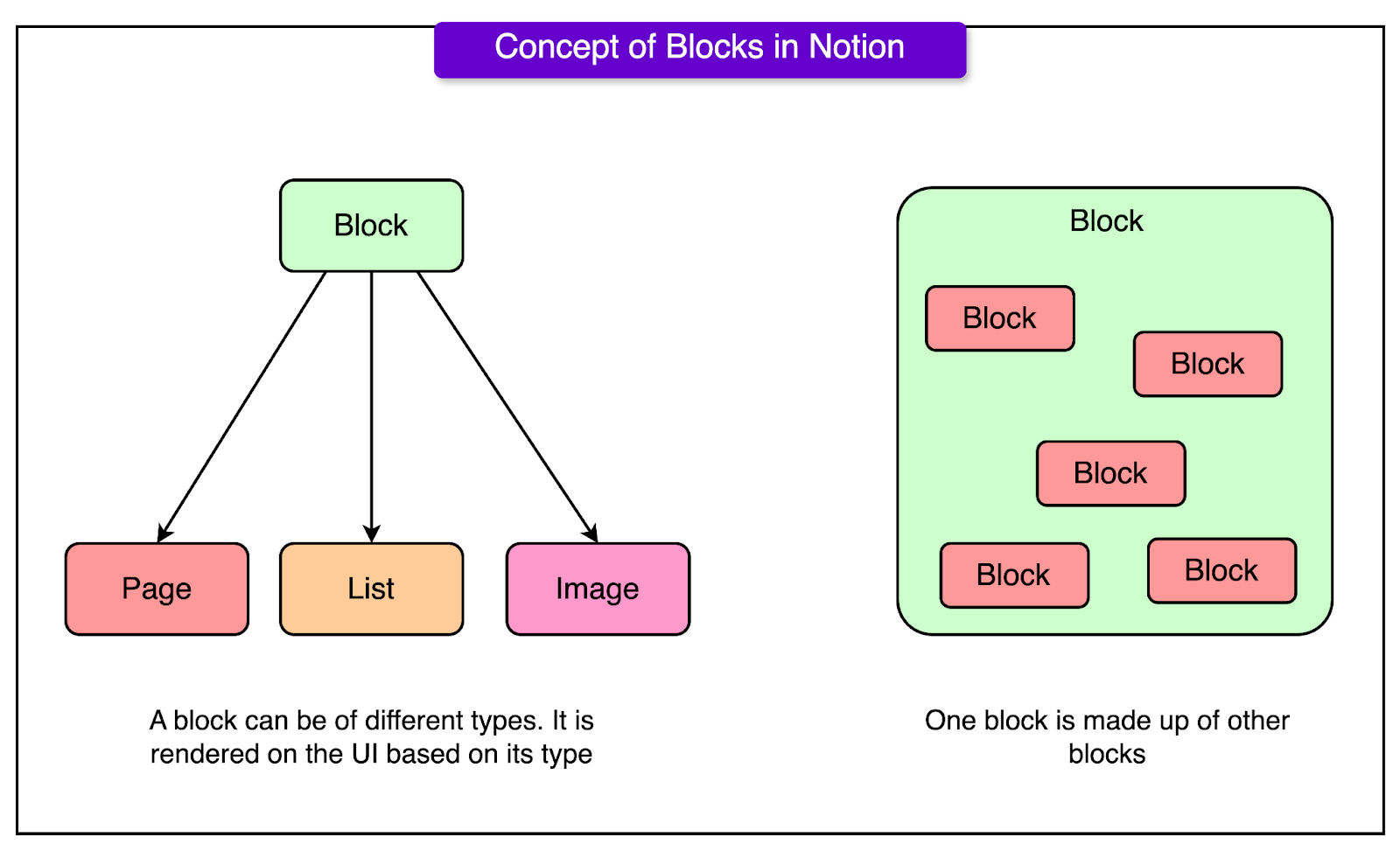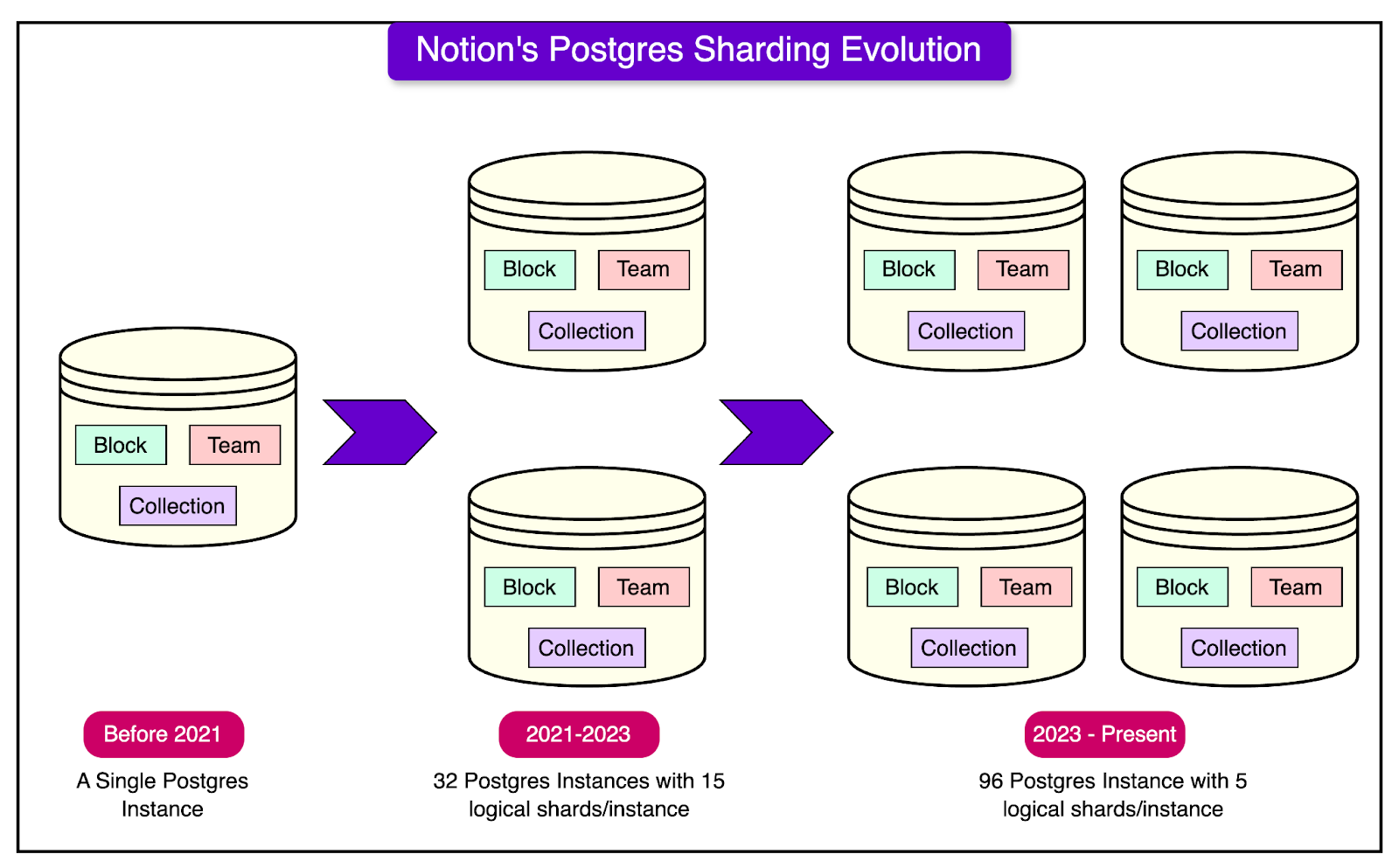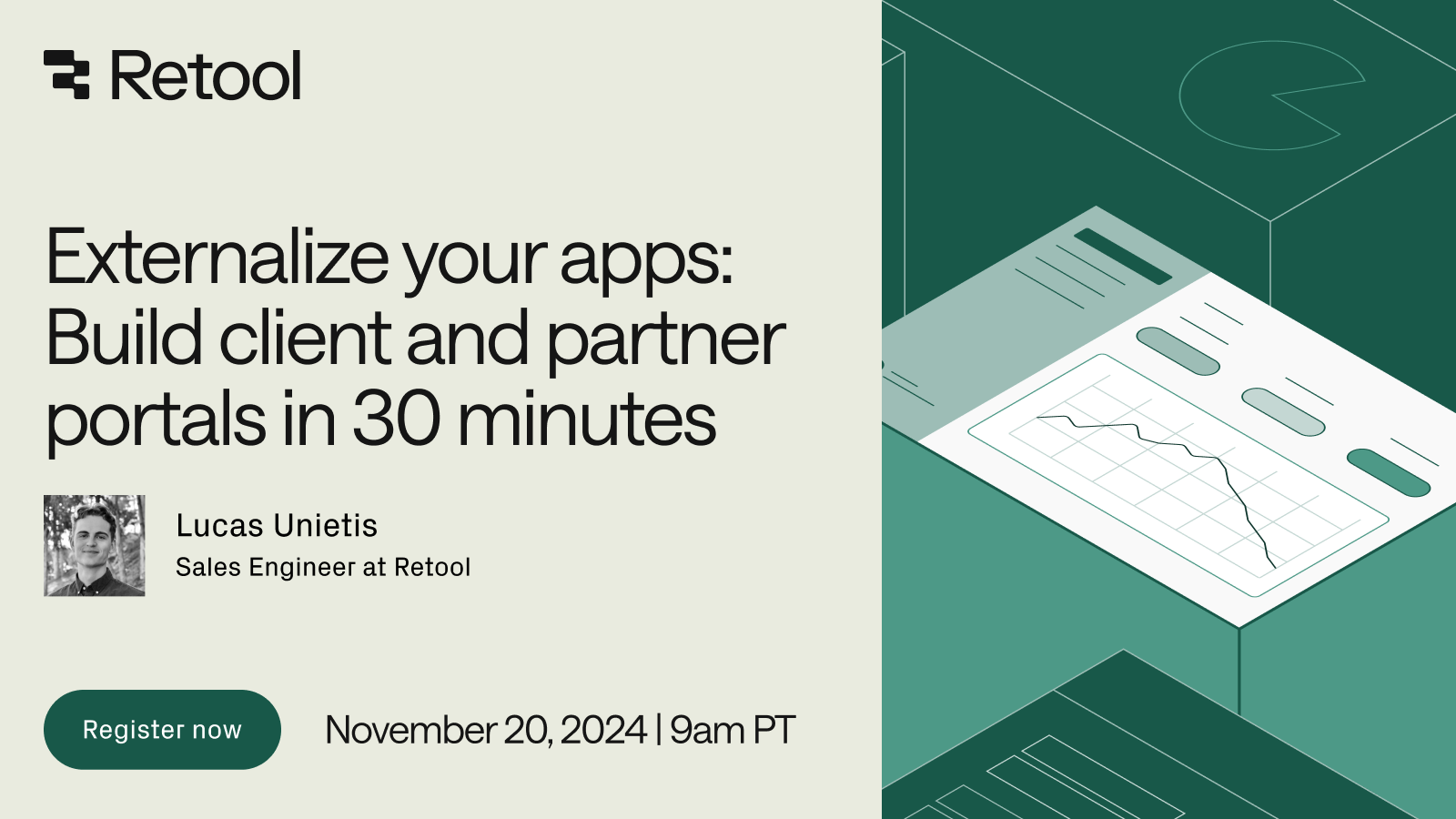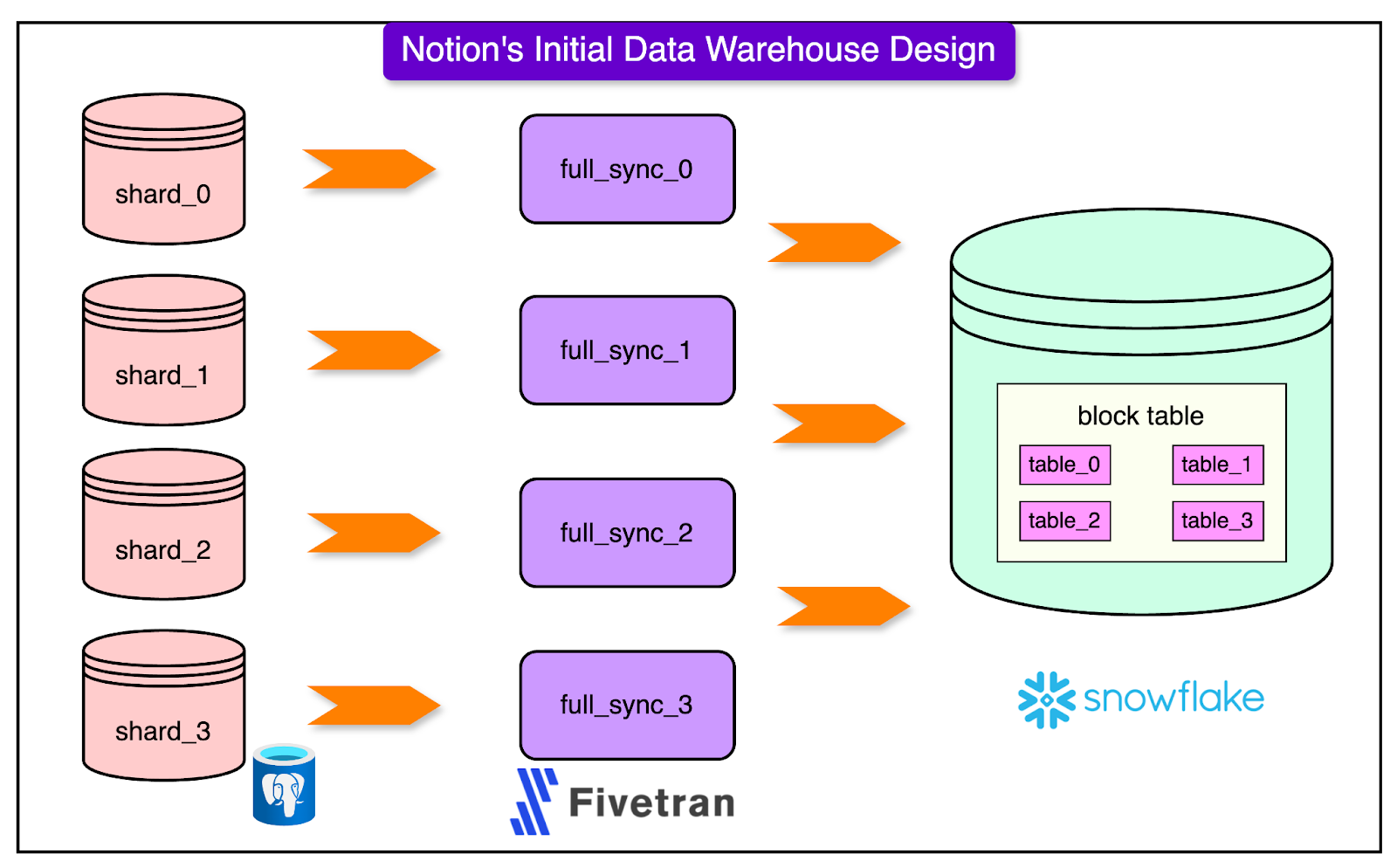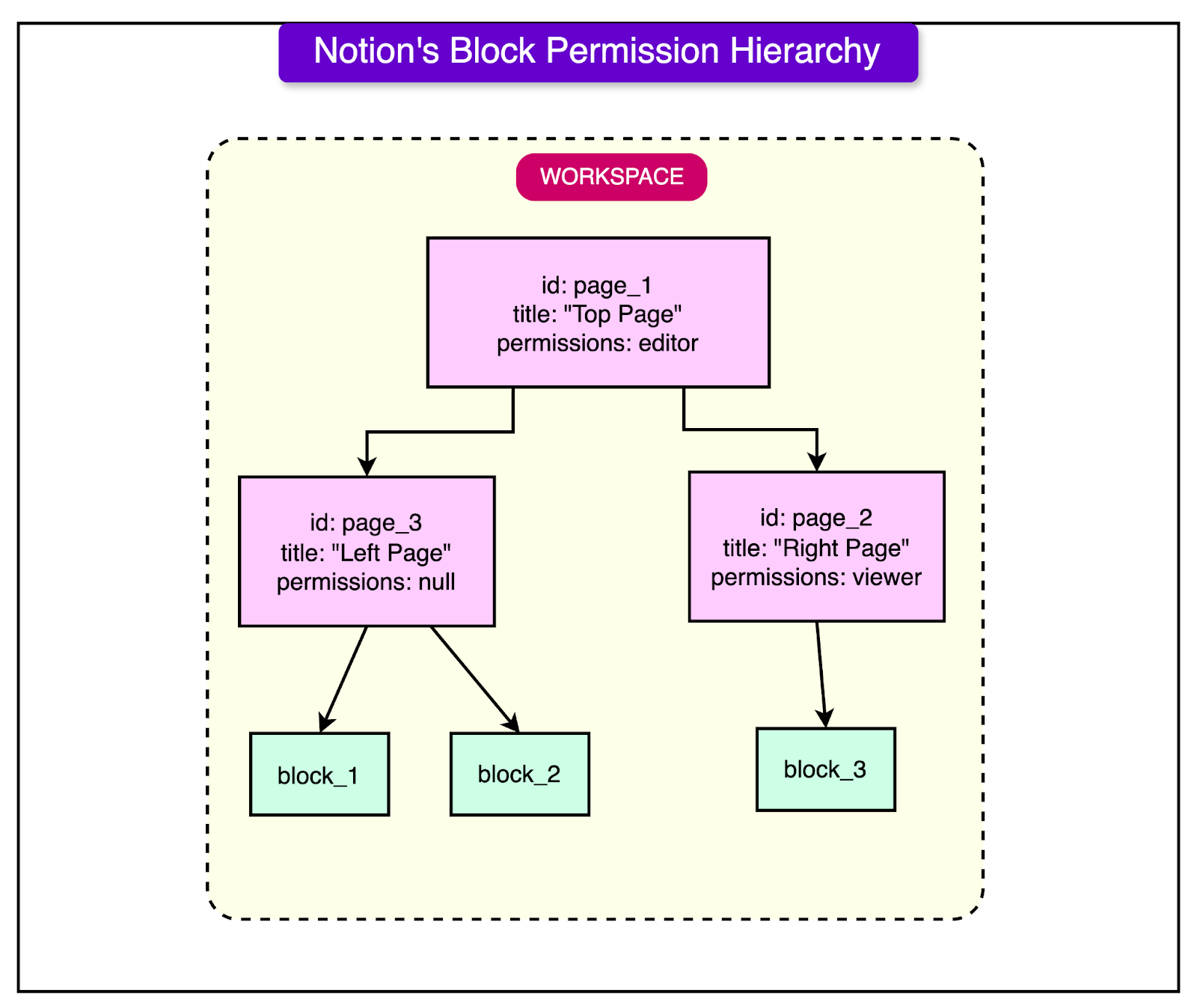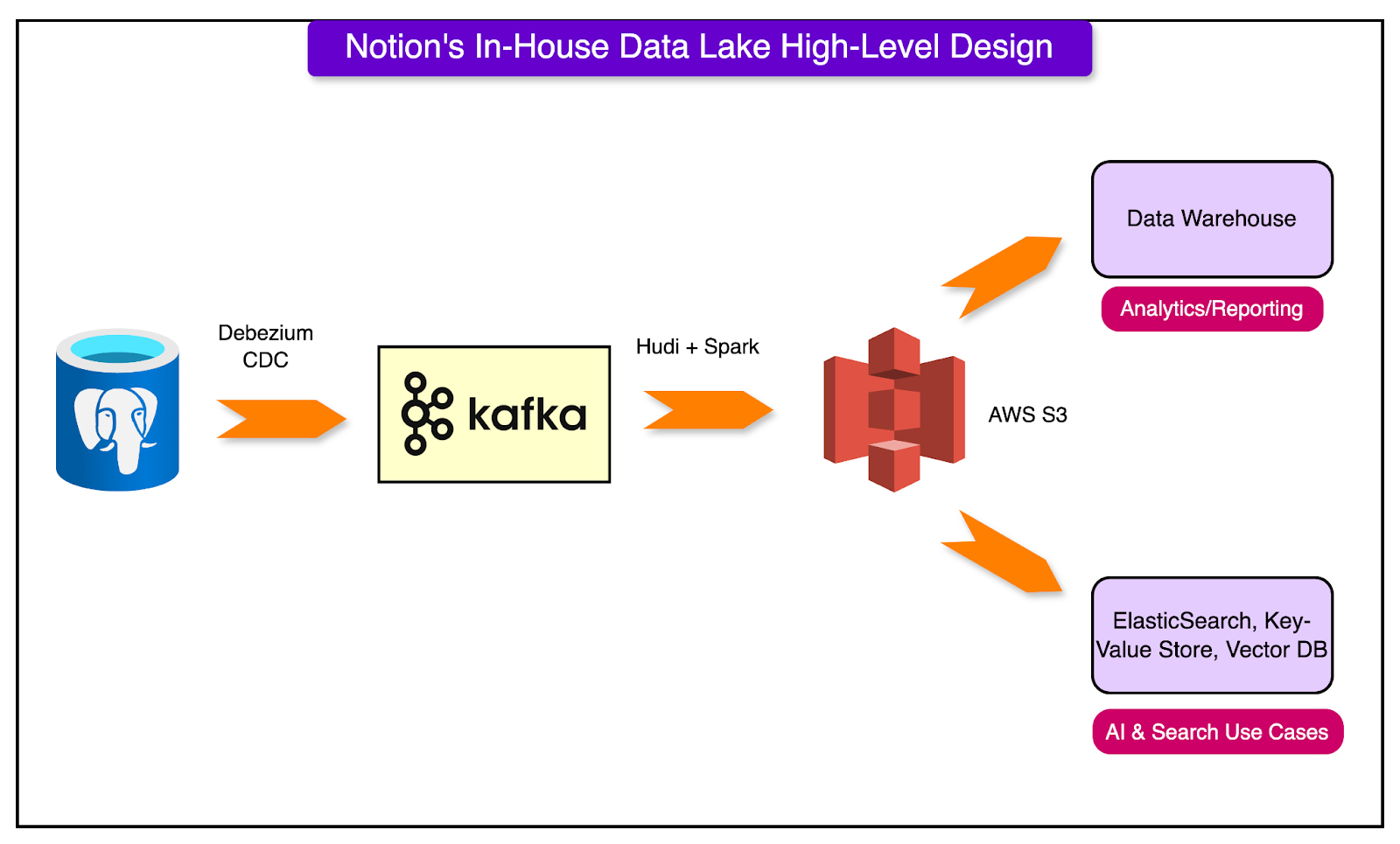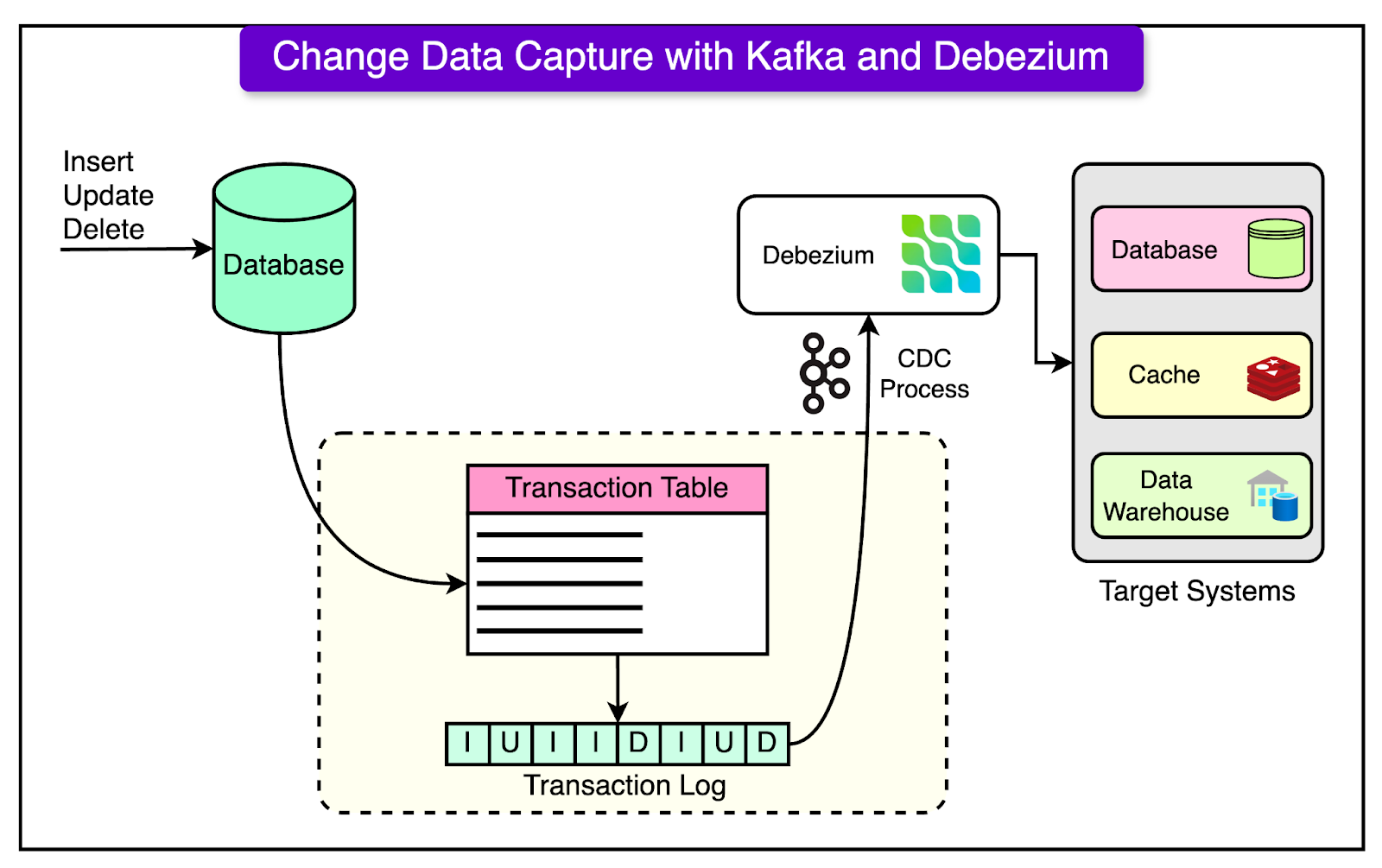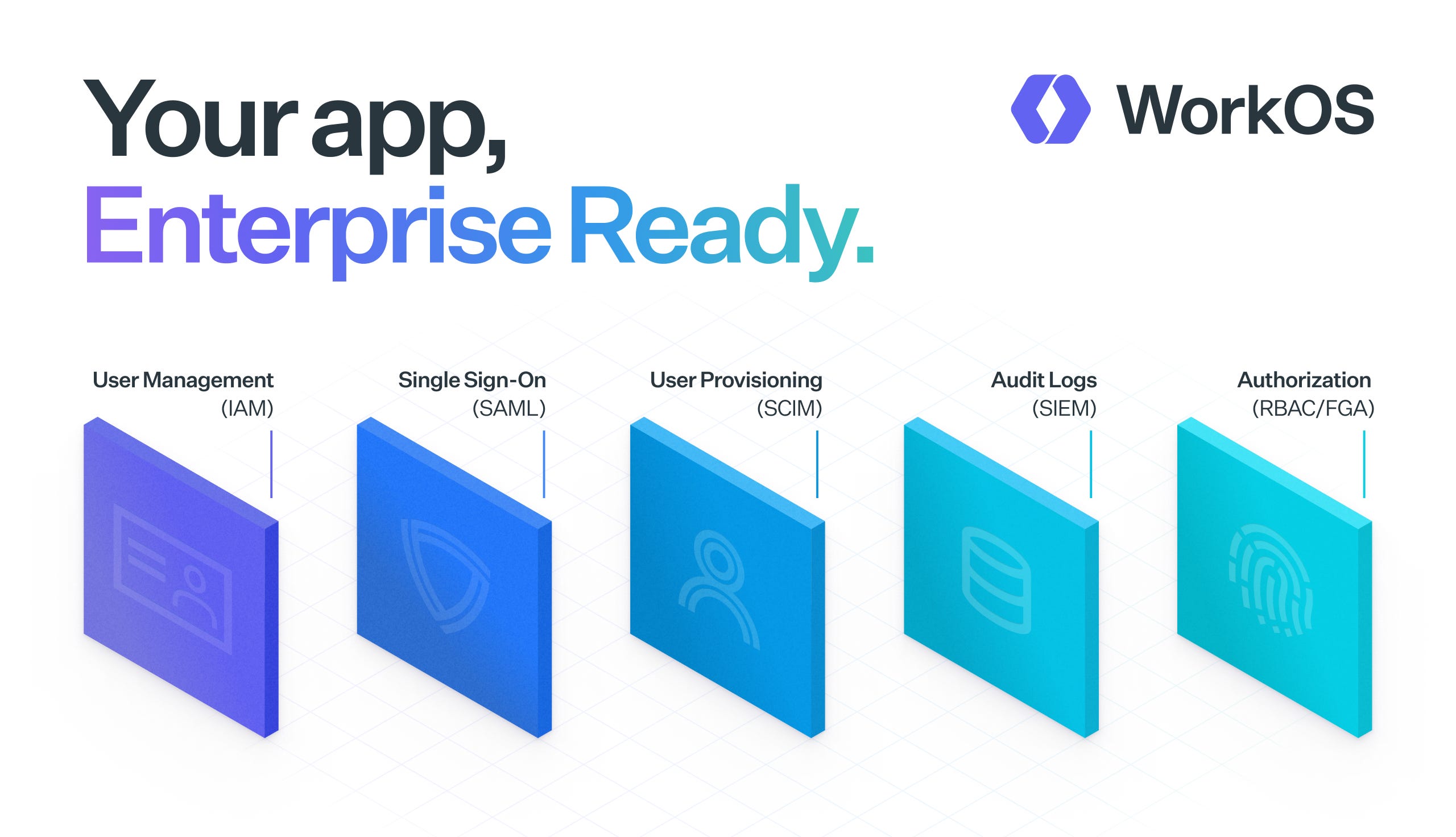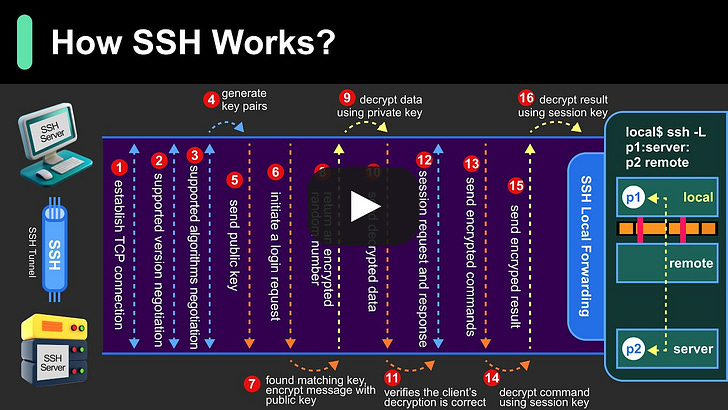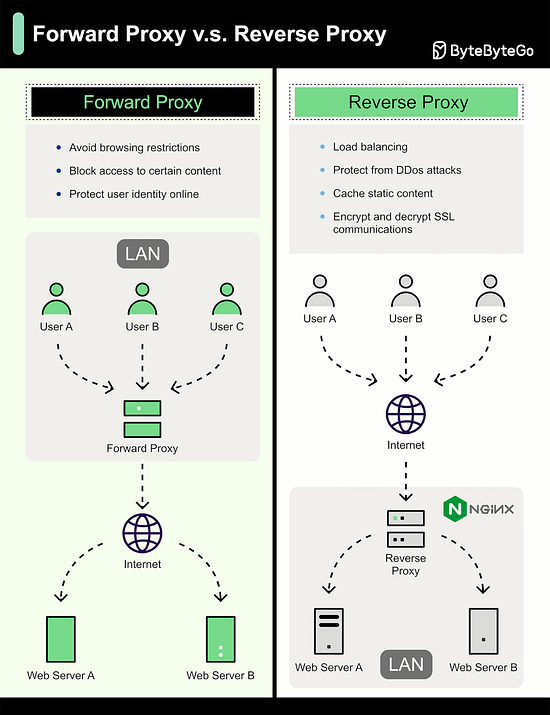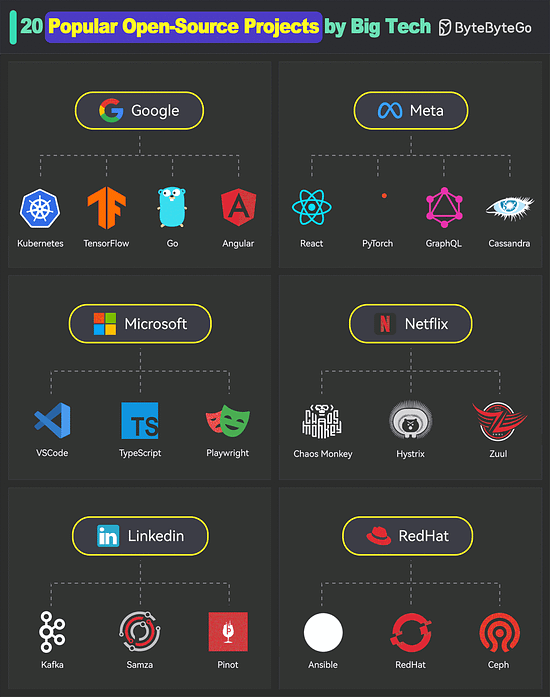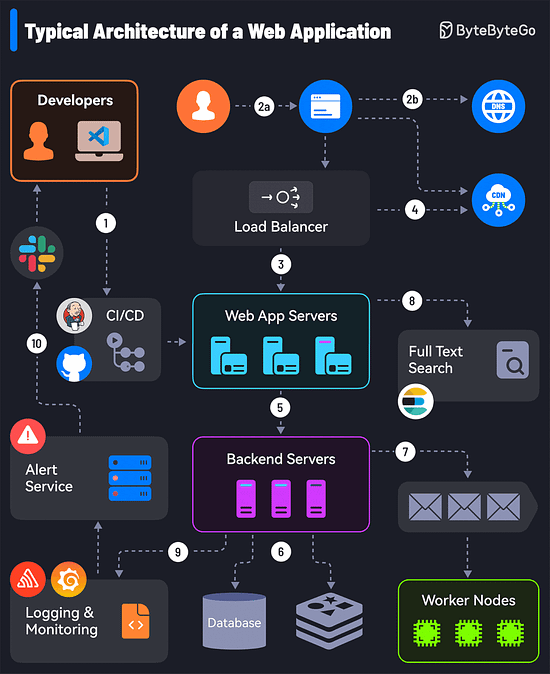Archives
- By thread 4575
-
By date
- June 2021 10
- July 2021 6
- August 2021 20
- September 2021 21
- October 2021 48
- November 2021 40
- December 2021 23
- January 2022 46
- February 2022 80
- March 2022 109
- April 2022 100
- May 2022 97
- June 2022 105
- July 2022 82
- August 2022 95
- September 2022 103
- October 2022 117
- November 2022 115
- December 2022 102
- January 2023 88
- February 2023 90
- March 2023 116
- April 2023 97
- May 2023 159
- June 2023 145
- July 2023 120
- August 2023 90
- September 2023 102
- October 2023 106
- November 2023 100
- December 2023 74
- January 2024 75
- February 2024 75
- March 2024 78
- April 2024 74
- May 2024 108
- June 2024 98
- July 2024 116
- August 2024 134
- September 2024 130
- October 2024 141
- November 2024 171
- December 2024 115
- January 2025 216
- February 2025 140
- March 2025 220
- April 2025 149
-
How leaders can tap the power of vulnerability
Build trust Brought to you by Alexis Krivkovich (Alexis_Krivkovich@McKinsey.com) and Dana Maor (Dana_Maor@McKinsey.com), global leaders of McKinsey’s People & Organizational Performance Practice
New from McKinsey Quarterly
This email contains information about McKinsey’s research, insights, services, or events. By opening our emails or clicking on links, you agree to our use of cookies and web tracking technology. For more information on how we use and protect your information, please review our privacy policy.
You received this email because you subscribed to our McKinsey Quarterly alert list.
Copyright © 2024 | McKinsey & Company, 3 World Trade Center, 175 Greenwich Street, New York, NY 10007
by "McKinsey & Company" <publishing@email.mckinsey.com> - 02:48 - 12 Nov 2024 -
Storing 200 Billion Entities: Notion’s Data Lake Project
Storing 200 Billion Entities: Notion’s Data Lake Project
Data Modeling for Performance: Virtual Masterclass (Sponsored)͏ ͏ ͏ ͏ ͏ ͏ ͏ ͏ ͏ ͏ ͏ ͏ ͏ ͏ ͏ ͏ ͏ ͏ ͏ ͏ ͏ ͏ ͏ ͏ ͏ ͏ ͏ ͏ ͏ ͏ ͏ ͏ ͏ ͏ ͏ ͏ ͏ ͏ ͏ ͏ ͏ ͏ ͏ ͏ ͏ ͏ ͏ ͏ ͏ ͏ ͏ ͏ ͏ ͏ ͏ ͏ ͏ ͏ ͏ ͏ ͏ ͏ ͏ ͏ ͏ ͏ ͏ ͏ ͏ ͏ ͏ ͏ ͏ ͏ ͏ ͏ ͏ ͏ ͏ ͏ ͏ ͏ ͏ ͏ ͏ ͏ ͏ ͏ ͏ ͏ ͏ ͏ ͏ ͏ ͏ ͏ ͏ ͏ ͏ ͏ ͏ ͏ ͏ ͏ ͏ ͏ ͏ ͏ ͏ ͏ ͏ ͏ ͏ ͏ ͏ ͏ ͏ ͏ ͏ ͏ ͏ ͏ ͏ ͏ ͏ ͏ ͏ ͏ ͏ ͏ ͏ ͏ ͏ ͏ ͏ ͏ ͏ ͏ ͏ ͏ ͏ ͏ ͏ ͏ ͏ ͏ ͏ ͏ ͏ ͏ ͏ ͏ ͏ ͏ ͏ ͏ ͏ ͏ ͏ ͏ ͏ ͏ ͏ ͏ ͏ ͏ ͏ ͏ ͏ ͏ ͏ ͏ ͏ ͏ ͏ ͏ ͏ ͏ ͏ ͏ ͏ ͏ ͏ ͏ ͏ ͏ ͏ ͏ ͏ ͏ ͏ ͏ ͏ ͏ ͏ ͏ ͏ ͏ ͏ ͏ Forwarded this email? Subscribe here for moreData Modeling for Performance: Virtual Masterclass (Sponsored)
Get battle-tested tips from Bo Ingram, Discord Engineer and Author of ScyllaDB in Action
This masterclass shares pragmatic data modeling strategies for real-time, always-on use cases. To make the discussion concrete, we’ll teach by example with a sample restaurant review application and live monitoring dashboards.
After this free 2-hour masterclass, you will know how to:
Design a data model that takes advantage of the database’s internal architecture
Apply data modeling fundamentals and advanced strategies for performant queries
Measure and monitor the performance impact of your data modeling decisions
Spot and diagnose the manifestations of common data modeling mistakes
This is a great way to discover the strategies used by gamechangers like Discord, Disney+, Expedia, and more.
Disclaimer: The details in this post have been derived from the Notion Engineering Blog. All credit for the technical details goes to the Notion engineering team. The links to the original articles are present in the references section at the end of the post. We’ve attempted to analyze the details and provide our input about them. If you find any inaccuracies or omissions, please leave a comment, and we will do our best to fix them.
The famous productivity app Notion has witnessed a staggering 10X data growth since 2021.
At the start of 2021, they had around 20 billion block rows in Postgres. In 2024, this figure has grown to more than 200 billion blocks. The data volume, even when compressed, is hundreds of terabytes.
Moreover, all of this block data has been doubling every 6 to 12 months, driven by user activity and content creation.
Notion’s engineering team had to manage this rapid growth while meeting the ever-increasing data demands of the core product and the analytics use cases. This required them to build and scale Notion’s data lake.
In this post, we’ll take a look at the challenges Notion faced while doing so and how they overcame those challenges.
What is a Block?
Before going further, it’s important to understand the concept of “Block” in Notion.
Everything you see in the Notion editor (texts, images, headings, lists, pages, etc) is modeled as a “block” entity in the backend. The block types may have different front-end representations and behaviors. However, they are all stored in a Postgres database with a consistent structure, schema, and associated metadata.
See the diagram below for reference:
As Notion started to see data growth, its engineering team opted for sharding to scale the monolithic Postgres instance.
In 2021, the Postgres database was sharded to 32 physical instances with each instance comprising 15 logical shards.
Next, in 2023, they increased to 96 physical instances with 5 logical shards per instance.
In essence, they maintained a total of 480 logical shards while increasing the number of physical instances.
See the diagram below for reference:
In 2021, Postgres at Notion catered to online user traffic as well as the various offline data analytics and machine learning requirements. However, as the demands grew for both data needs, the Notion engineering team decided to build a dedicated data infrastructure to handle offline data without interfering with online traffic.
Build client and partner portals in 30 minutes (Sponsored)
Are your engineering teams spending months building and maintaining customer-facing dashboards and portals?
Join our 30-minute demo to see how you can:
Launch custom portals with minimal engineering resources
Build end-to-end white-labeled, beautiful apps
Add user auth and secure data access
Simplify development with multi-tenant workspaces
Hear why companies are building their products and client-facing tools with Retool: Teachable launched enterprise analytics to 1,000+ customers in just two months, while Ylopo scaled their customer portal from hundreds to tens of thousands of users in weeks by externalizing their Retool apps.
The Initial Data Warehouse Architecture
Notion built the first dedicated data infrastructure in 2021. It was a simple ELT (Extract, Load, and Transform) pipeline.
See the diagram below:
The pipeline worked as follows:
A third-party tool Fivetran ingested data from the Postgres WAL (Write Ahead Log) for all the 480 shards. In other words, there were 480 hourly-run connectors.
Fivetran sent the ingested data to 480 raw Snowflake tables.
Within Snowflake, these tables were merged into a single large table for analytics, reporting, and machine learning requirements.
There were multiple scaling challenges with this approach.
1 - Operational Difficulty
Monitoring and managing 480 Fivetran connectors (one for every shard) was a difficult job.
Activities such as re-syncing these connectors during Postgres re-sharding, upgrade, and maintenance periods created a significant on-call burden for the support team.
2 - Speed and Cost
Ingesting data to Snowflake became slower and costlier, particularly due to Notion’s update-heavy workload.
Since Notion’s primary use is note-taking and managing those notes, users update existing blocks much more often than they add new ones. This results in an update-heavy workload.
However, most data warehouses (including Snowflake) are optimized for insert-heavy workloads.
3 - Support for Requirements
Even more than the first two, the lack of support for certain requirements eventually became a more important challenge.
As Notion grew, the data transformation logic became more complex and heavy, making it difficult to handle using the standard SQL interface offered by off-the-shelf data warehouses.
For example, an important use case was to construct denormalized views of Notion’s block data for key features related to AI and Search. However, constructing permission data for a block was difficult since it wasn’t statically stored in Postgres but constructed on the fly via tree traversal computation.
See the example below:
In this example, the various blocks (block_1, block_2, and block_3) inherit permissions from their immediate parents (page_3 and page_2) and ancestors (page_1 and the workspace itself).
Permission data for such blocks can be built only by traversing the tree up to the root (i.e. the workspace). With billions of blocks, Notion found this computation very costly in Snowflake.
Notion’s New Data Lake
Due to the challenges with scaling and operating the initial data warehouse, Notion decided to build a new in-house data lake with the below objectives:
The data repository should be capable of storing both raw and processed data at scale.
Data ingestion and computation for Notion’s update-heavy block data should be fast, scalable, and cost-efficient.
Support for denormalized data that can unlock critical features like AI and Search.
The diagram below shows the high-level design of the new data lake.
The process works as follows:
Incrementally updated data is ingested from Postgres to Kafka using Debezium CDC connectors.
Apache Hudi, an open-source data processing and storage framework, writes these updates from Kafka to S3. This is the raw data.
Next, the raw data is transformed, denormalized (tree traversal and permission data construction), and enriched.
The processed data is stored in S3 again or in downstream systems to serve analytics and reporting needs.
While the final look of the design seems quite straightforward, Notion arrived at it after making several important design decisions.
Let’s look at a few of them in more detail.
1 - Choosing a Data Repository and Lake
Notion used S3 as a data repository and lake to store both the raw and processed data. Other product-facing data stores such as ElasticSearch, Vector Database, and Key-Value store were downstream of this.
Choosing S3 was a logical choice since Notion’s Postgres database is based on AWS RDS and its export-to-S3 feature made it easy to bootstrap tables in S3. Also, S3 is proven to store large amounts of data and support data processing engines like Spark at low cost.
2 - Choosing the Processing Engine
Notion engineering team chose Spark as the main data processing engine. As an open-source framework, it was easy to set up and evaluate.
There were some key benefits to using Spark:
A wide range of built-in functions and UDFs beyond SQL enable complex data processing logic like tree traversal and block data denormalization.
Existence of a user-friendly PySpark framework for light use cases and advanced Scala Spark for high-performance, and heavy data processing.
Ability to process large-scale data in a distributed manner.
3 - Incremental Ingestion or Snapshot Dump
Based on performance and cost comparisons, Notion went with a hybrid design with more emphasis on incremental ingestion.
During normal operations, they ingest and continuously apply changed Postgres data to S3.
In rare cases, they take a full Postgres snapshot once to bootstrap tables in S3.
This was done because the incremental approach ensures fresher data at a lower cost and minimal delay. For example, the incremental approach takes a few minutes to a couple of hours as compared to the snapshot dump taking more than 10 hours and costs twice as much.
4 - Streamline Incremental Ingestion
The Notion engineering team chose the Kafka Debezium CDC (Change Data Capture) connector to publish incrementally changed Postgres data to Kafka. This was done for the scalability, ease of setup, and close integration with the existing infrastructure.
For ingesting incremental data from Kafka to S3, they chose Apache Hudi. Other options on the table were Apache Iceberg and DataBricks Delta Lake. However, Hudi gave a better performance with Notion’s update-heavy workload along with native integration with Debezium CDC messages.
5 - Ingest Raw Data Before Processing
Another interesting decision was to ingest raw Postgres data to S3 without on-the-fly processing.
This was done to create a single source of truth and simplify debugging across the data pipeline. Once the data is in S3, they perform the transformation, denormalization, and enrichment. The intermediate data is once again stored in S3 and only highly clean, structured, and business-critical data is ingested to downstream analytics systems.
Solving Scaling Challenges of the New Data Lake
Since the data volume at Notion was ever-growing, the engineering team took many steps to tackle the scalability challenges.
Here are a few important ones to understand.
1 - CDC Connector and Kafka
They set up one Debezium CDC connector per Postgres host and deployed them in an AWS EKS cluster.
For reference, the diagram below shows how CDC with Debezium and Kafka works on a high level.
Also, there is one Kafka topic per Postgres table, and all connectors consuming from 480 shards write to the same topic for that table. This approach simplified downstream Hudi ingestion to S3 by reducing the complexity of maintaining 480 separate topics for each table.
2 - Hudi Setup
The Notion engineering team used Apache Hudi Deltastreamer (Spark-based) to consume Kafka messages and replicate Postgres tables in S3. They utilized COPY_ON_WRITE Hudi table type with UPSERT operation to support the update-heavy workload.
Some key optimizations were as follows:
Partitioned data using the Postgres shard scheme (i.e. 480 shards).
Sorted data based on the last updated time (event_lsn)
Set index type to bloom filter.
3 - Spark Data Processing Setup
They used PySpark for the majority of data processing jobs because of its low learning curve and accessibility to team members. For tasks like tree traversal and denormalization, they utilized Scala Spark.
A key optimization was to manage data by handling large and small shards differently. Small shards were loaded entirely into memory whereas large shards were managed through disk reshuffling. Also, to optimize runtime and efficiency, they implemented multi-threading and parallel processing for 480 shards.
4 - Bootstrap Setup
The bootstrap setup works as follows:
To bootstrap new tables, they first set up a Debezium Connector to ingest Postgres changes to Kafka.
They start the AWS RDS export-to-S3 job from a specific timestamp to save the latest snapshot of Postgres tables to S3.
Next, they create a Spark job to read the data from S3 and write them to the Hudi table format.
To maintain data completeness and integrity, all changes made during the snapshotting process are captured by setting up Deltastreamer to read Kafka messages from the specific timestamp.
Conclusion
Notion’s data lake infrastructure project development started in the spring of 2022 and was completed by the fall. It has been a huge success for them in terms of cost and reliability.
Some key benefits have been as follows:
Over $1 million in cost savings in 2022. Proportionally higher savings in 2023 and 2024.
Ingestion time reduced from 1+ day to minutes/hours
Re-sync is possible within 24 hours without overloading databases.
Accommodate Notion’s 6-12 month data doubling rate.
Enabled successful rollout of Notion AI features in the year 2023-2024.
References:
SPONSOR US
Get your product in front of more than 1,000,000 tech professionals.
Our newsletter puts your products and services directly in front of an audience that matters - hundreds of thousands of engineering leaders and senior engineers - who have influence over significant tech decisions and big purchases.
Space Fills Up Fast - Reserve Today
Ad spots typically sell out about 4 weeks in advance. To ensure your ad reaches this influential audience, reserve your space now by emailing sponsorship@bytebytego.com
Like
Comment
Restack
© 2024 ByteByteGo
548 Market Street PMB 72296, San Francisco, CA 94104
Unsubscribe
by "ByteByteGo" <bytebytego@substack.com> - 11:38 - 12 Nov 2024 -
Enhance Your Project"
Dear,
I hope you had a fantastic day!
Are you ready to elevate your project estimating? We offer reliable cost estimating services tailored for general contractors, subcontractors, and more.
If you’d like more information or to see samples, simply reply to this email. I'm here to assist you!
Let’s work together to make your projects a success!
Best regards,

by "Kevin Osborn" <osborn.globalestimatings@gmail.com> - 10:37 - 12 Nov 2024 -
GRAB YOUR SEAT !!! POKA YOKE - YOUR ULTIMATE TOOL FOR ZERO MISTAKES AND ZERO ERRORS (16-17 Dec 2024)
Please call 012-588 2728
email to pearl-otc@outlook.com
FACE-TO-FACE PUBLIC PROGRAM
POKA YOKE - YOUR ULTIMATE TOOL
FOR ZERO MISTAKES AND ZERO ERRORS
Venue : Wyndham Grand Bangsar Kuala Lumpur Hotel (SBL Khas / HRD Corp Claimable Course)
Date : 16 Dec 2024 (Mon) | 9am – 5pm By Bala
17 Dec 2024 (Tue) | 9am – 5pm .
SYNOPSIS:
Mistakes and errors are becoming the talk of every day when something goes wrong. Industries, this elevates to high level as the number of people and number of machines are in large number. Most of the times when mistakes and errors happen, the training and awareness levels are blamed and immediate attention given to training and awareness. however this two only last for a few weeks and the scenario returns back.
In reality, training and awareness cannot eliminate mistakes and errors. This are just temporary actions that will contain problems from spreading. Training and awareness building are just like tonic drink " livita "and will last only fora short period. Therefore hoping on this two will never solve the issue of mistakes and errors.
In 1963, a Japanese statistical engineer by the name of Mr. Shigeo Shingo, proved that :
· People will makemistakes
· People can make mistakes
· Mistakes and errors are un-avoidable
In his study, he found, in-order to eliminate mistakes and errors, one should look for the potential that caused the mistake or error. By eliminating the potential we can prevent mistakes and errors from making. every mistake or error has one or many potentials that are waiting to happen. As long as this are not eliminated, the mistakes and errors are doomed to happen.
Mr. Shigeo Shingo devised a method to eliminate the potential which he named as 'Poka Yoke' that translates to" eliminate unintentional mistakes". This concept spread world wide as a formidable tool for eliminating mistakes and errors. Poka Yoke becoming a well known mistake proofing tool in all manufacturing industries.
OBJECTIVE OF PROGRAM :
Show participants
- Why people make mistakes.
- Why errors happen in machine operation.
- How to find out the potential that lead to making mistakes.
- How to establish the objectives of Poka Yoke.
- How to select the techniques.
- How to apply the detection tools.
- How use the Poka Yoke flow chart.
OUTCOME OF THE PROGRAM :
Participants will know and understand
- How to determine the potential.
- How to select the objective
- How to determine the technique.
- How to apply the detection methods.
- Practically apply the Poka Yoke flow chart
TARGET GROUP :
All Managers, Engineers, Supervisors, Technicians of Manufacturing Group.
OUTLINE OF WORKSHOP
Module 1 : Why Poka Yoke ?
- Errors and mistakes destined or created.
- Common people mistakes.
- Common equipment errors.
- Common design short comings.
- Can all errors and mistakes eliminated - activity.
Module 2 : Introduction to Poka Yoke.
- Definition of Poka Yoke.
- History of Poka Yoke.
- Concept of Poka Yoke.
Module 3 : Poka Yoke approach.
- Determine the purpose.
- Establish the technique.
- Select the detection tool.
- Poka Yoke flow chart.
Module 4 : Eliminate human induced mistakes .
- Why humans make mistakes.
- Understanding the root cause.
- Determine the purpose.
- Techniques for eliminating human mistakes.
Technique 1 : Guide pin / block method.
Technique 2 : Asymmetry principle.
Technique 3 : Counters
Technique 4 : Color codes
Technique 5 : Checklists.
Module 5 : Prevent unexpected equipment errors.
- Why errors occur in equipments.
- Understand the weaknesses.
- Determine the purpose.
- Techniques for eliminating equipment errors.
Technique 6 : contact methods
Technique 7 : contact-less methods.
Technique 8 : condition monitor methods
Technique 9 : operational changes.
Technique 10 : environment changes.
Technique 11 : error detection programs.
Module 6 : Make systems fool-proof always.
- Common system errors.
- Understanding the root causes.
- Techniques for eliminating system errors
Technique12 : asymmetry methods ( shape )
Technique13 : go - no go methods ( fitting )
Technique14 : electronic control methods
Technique15 : early warning methods
Technique16 : immediate shut down methods.
Module 7 : Evaluate Poka Yoke solutions .
- Negative box-paradigm
- Common mental blocks.
- Idea generation for Poka Yoke.
- Guidelines for idea selection.
- Golden rule of Poka Yoke- keep it simple
** Certificate of attendance will be awarded for those who completed the course
ABOUT THE FACILITATOR
MR. BALA
Mr. Bala is a training consultant with over 18 years of experience in manufacturing and 23 years in training. Mr. Bala began his career in the Equipment Maintenance function in Motorola Malaysia and grew steadily to become an Equipment Engineer. He later took on a position as Section Head for a Production Unit which he ran for several years. He moved on to Thomson Audio Electronics in Muar as a Production Manager in 1991 where he spent 2 years. Subsequently, he assumed a position as Production Manager and then as a Training and Education Manager at Samsung Electron Devices, Seremban till 1995 and then became a full-time trainer in July 1995.
Mr. Bala specializes in Equipment Maintenance, Manufacturing and Training. since becoming a manufacturing trainer, he has conducted more than 700 training sessions covering more than 14,000 participants both in-house and public programs in last 23 years. He currently is one of the most prominent maintenance consultants for theoretical and subject matter expertise. He also specializes on TPM and have conducted numerous in-house trainings for the above topic. He is one of the most prominent trainer and consultant for RCM training and consultation.
His vast experience both hands-on and conceptual training makes him a valuable resource person for maintenance Development in the Manufacturing and service sector. He was also invited to speak in Universities and in Maintenance Seminar’s and also trains hospital maintenance staff.
(SBL Khas / HRD Corp Claimable Course)
TRAINING FEE
2 days Face-to-Face Public Program
RM 2,250.00/pax
(excluded 8% SST)
Group Registration: Register 3 participants from the same organization, the 4th participant is FREE.
(Buy 3 Get 1 Free) if Register before 6 Dec 2024. Please act fast to grab your favourite training program!We hope you find it informative and interesting and we look forward to seeing you soon.
Please act fast to grab your favorite training program! Please call 012-588 2728
or email to pearl-otc@outlook.com
Do forward this email to all your friends and colleagues who might be interested to attend these programs
If you would like to unsubscribe from our email list at any time, please simply reply to the e-mail and type Unsubscribe in the subject area.
We will remove your name from the list and you will not receive any additional e-mail
Thanks
Regards
Pearl
OTC Training Centre Sdn Bhd
by "sump@otcmarketing.com.my" <sump@otcmarketing.com.my> - 04:34 - 12 Nov 2024 -
GRAB 3 FREE 1 !!! BASIC GREENHOUSE GAS (GHG) ACCOUNTING, MITIGATION, AUDIT AND REPORTING TRAINING (4-5 Dec 2024)
Please call 012-588 2728
email to pearl-otc@outlook.com
FACE-TO-FACE PUBLIC PROGRAM
BASIC GREENHOUSE GAS (GHG) ACCOUNTING,
MITIGATION, AUDIT AND REPORTING TRAINING
(6 CPD Approved by EiMAS - EiMAS 2024/CPD0584/MFA)
8 CDP Points Awarded by Suruhanjaya Tenaga
(Claimable CPD MBOT : 12 Points)
Venue : Wyndham Grand Bangsar Kuala Lumpur Hotel (SBL Khas / HRD Corp Claimable Course)
Date : 4 Dec 2024 (Wed) | 9am – 5pm By Shaharuddin
5 Dec 2024 (Thu) | 9am – 5pm . .
INTRODUCTION:
Many organizations are starting to think about how to manage their greenhouse gas (GHG) emissions for a number of reasons: to minimize their impact on the planet, to prepare for regulation and address evolving disclosure requirements, to increase energy efficiency and/or to build their profile as an environmental leader. Building an inventory of your sources and emissions (eg., carbon footprint) is an essential first step to assessing risks, reducing emissions and tracking your performance.
This course aims at professionals responsible for measuring, reporting and managing carbon dioxide and other greenhouse gas (GHG) emissions for their organization. This training course will cover the basics of GHG accounting for organizations. The course materials are based on the WRI/WBCSD GHG Protocol Corporate Standard, while referring to the ISO 14064: Part 1 international standard for GHG inventories.
This course will provide you the latest information regarding GHG emissions accounting and management and focuses on areas such as: background to climate change, developing a carbon accounting system, managing GHG emissions and options for reducing GHG emissions. You will also be equipped to communicate effectively the imperative of reducing the GHG emissions with colleagues.
This training is designed to provide participants with essential understanding of carbon accounting approaches and methodologies based on ISO14064 and the GHG Protocol: Corporate Accounting and Reporting Standards. These standards besides have formed the basis of many local and international schemes, they also provide tools for industries and governments in developing their programs to reduce greenhouse gas (GHG) emissions.
OBJECTIVE:
This programme will enable participants to :-
- Understand the Greenhouse Gas Protocol’s Corporate Standard
- Understand the ISO 14064 Standard
- Enable to identify GHG sources of emissions
- Enable participants to prepared GHG calculations
- Enable participants to determine GHG mitigation
- Understand the assess GHG audit and verification processes
- Understand the learn to prepare reports
WHO SHOULD ATTEND:
Safety committees who are responsible for identifying GHG sources, prepared GHG calculations, determine mitigation, assess GHG audit processes.
LEARNING METHODOLOGY:
This training will involve the use of slides, handout material, practical tools, sharing of actual cases, Q & A and appropriate videos.
OUTLINE OF WORKSHOP
DAY ONE
9.00 am - 10.30 am
- Overview of GHG Accounting
- Introduction to GHG Accounting and Its Value to Businesses & Investors
- Terminology
- Accounting Process Overview
- Current Industry Initiatives
- Interactive Exercise 1
10.30 am - 10.45 am Tea Break
10.45 am - 1.00 pm
- The Science Behind GHG Accounting
- Why Do We Track GHG Emissions
- The Science of the GHG Effect
- The 6 GHGs, Their Impacts, and Sources
- Global Warming Potential (GWP)
- Interactive Exercise 2
1.00 pm - 2.00 pm Lunch
2.00 pm - 3.30 pm
- The Process of GHG Accounting Part 1
- Best Practices from GHG Protocol
- Defining Organizational Boundaries
- Defining Operational & Legal Boundaries
- Identifying Emissions Sources and Collecting Data
- Defining Units and Referencing Emissions Factors
- Common Pitfalls & Considerations
- Best Practices
3.30 pm - 3.45 pm Tea Break
3.45 pm - 5.00 pm
- The Process of GHG Accounting Part 2
- Purpose and Benefits of ISO 14064
Introduction of the ISO 14064-1:2006 Greenhouse gases — Part 1: Specification with guidance at the organization level for quantification and reporting of greenhouse gas emissions and removals
Introduction of ISO 14064-2:2018 Greenhouse gases — Part 2: Specification with guidance at the project level for quantification, monitoring and reporting of greenhouse gas emission reductions or removal enhancements
Introduction of ISO 14064-3:2018 Greenhouse gases — Part 3: Specification with guidance for the validation and verification of greenhouse gas assertions
DAY TWO
9.00 am - 10.30 am
- Example Scope 1 & 2 Calculations
- Interactive Exercise 3
- How to quantify and report GHG emissions
- Step-by-step inventory preparation
- Using the emission factors
- Fuel emission factors
- Stationary combustion fuel
- Transport fuel
- Biofuels and biomass
- Transmission and distribution losses for reticulated gases
- Purchased electricity, heat and steam emission factors
10.30 am - 10.45 am Tea Break
10.45 am - 1.00 pm
- Example Scope 3 Calculations & Challenges
- Interactive Exercise 4
- Fuel emission factors
- Refrigerant and other gases use emission factors
- Indirect business-related emission factors
- Travel emission factors
- Freight transport emission factors
1.00 pm - 2.00 pm Lunch
2.00 pm - 3.30 pm
- GHG Accounting in Corporations & Emissions Reports and Current State of GHG Accounting
- Why Corporations Should Measure GHG Emissions
- Investment Context Use Cases - Mandates & Compliance
- GHG Reductions & Planned Impact (Scope 4 Emissions)
3.30 pm - 3.45 pm Tea Break
3.45 pm - 5.00 pm
- Producing a GHG report
- Interpreting Emissions Reports
- Additional Tools & Resources
- Qualified Assessment
- Verification Procedure with Third Party
** Certificate of attendance will be awarded for those who completed the course
ABOUT THE FACILITATOR
MR MOHD SHAHARUDDIN
- Diploma in Industrial Chemistry, UiTM.
- BEng (Hons) Chemical Engineering, Univ. South Wales, UK
- Master of Environment, UPM
- Certified PSMB Trainer (Exemption)
Shaharuddin is an HSE Consultant and Trainer with more than 22 years of industrial related working experience. He specializes in providing training and consultancy services, especially in Dangerous Goods, Hazardous Chemicals, Hazardous Wastes, Process Plant Safety, Industrial Hygiene and Environmental Management. His HSE consultancies services covering various type of industries such as in oil & gas industries, chemical specialty plant, plastic & rubber based industry, automotive industries, pulp & paper manufacturing, woodworking industries, electroplating and electronic plant, steelmaking industries, food & beverage industries, paint manufacturing, construction industries, healthcare industries, utilities provider for water & wastewater treatment plant ,solid waste management company and an off-site facility for treatment and disposal of scheduled wastes.
Shaharuddin has experience as a registered Safety & Health Officer and as a Competent Person for Monitoring of Noise Exposure at Work with DOSH. He has involved in Dangerous Goods, Hazardous Chemicals or Scheduled Waste towards compliance program under the USECHH 2000 Regulation, UN Dangerous Goods Legislation and Scheduled Waste Regulation. He had a vast experience as a DOSH registered Assessor for Chemical Health Risk Assessment and also as an Industrial Hygiene Technician I & II, both for Testing and examination of Local Exhaust Ventilation and Chemical Exposure Monitoring. With these multiple industrial hygiene competencies, he had successfully conducted a great numbers of hazardous chemical assessment and monitoring projects throughout Malaysia. As a registered trainer with HRDF and DOSH, Shaharuddin has been actively conducting training on HSE particularly on Safe Handling of Hazardous Chemical/Dangerous Goods and Scheduled Waste Management. He has wide experience in conducting training and providing ISO consultancy to guide companies in implementing ISO 14001, OHSAS 18001 ,Carbon Footprint Assessment , Green Productivity Assessment, Life Cycle Assessment and Cleaner Production Program, for various types of industries in Malaysia. He also involve in giving training and consultancy to industries using chemicals in Chemical Management for Product Stewardship Program to comply with International Chemical Laws such as REACH, WEEE and RoHS.
Academically, Shaharuddin hold Diploma in Industrial Chemistry from UiTM. He also holds Bachelor Degree in Chemical Engineering ( Majoring in Process Safety, Environmental & Energy Management) from University of Glamorgan, Wales, UK and Master of Environmental Science from UPM with Project on Hazardous Chemical Management. He also holds Certificate in Indoor Air Quality Assessor from NIOSH, Certificate in Green Building Index Facilitator from Malaysia Green Building Council, Certificate of Green Productivity Trainer & Consultant from Asian Productivity Centre, Japan , a Certificate of Green Industry Auditor & Certificate of Environmental Auditor from Department of Environment, Malaysia and a Certificate of Energy Management System from UNIDO, and a Certificate in Z50 Green Technology Compliance – ILO-CIAST.
(SBL Khas / HRD Corp Claimable Course)
TRAINING FEE
2 days Face-to-Face Public Program
RM 2,250.00/pax
(excluded 8% SST)
Group Registration: Register 3 participants from the same organization, the 4th participant is FREE.
(Buy 3 Get 1 Free) if Register before 22 Nov 2024. Please act fast to grab your favourite training program!We hope you find it informative and interesting and we look forward to seeing you soon.
Please act fast to grab your favorite training program! Please call 012-588 2728
or email to pearl-otc@outlook.com
Do forward this email to all your friends and colleagues who might be interested to attend these programs
If you would like to unsubscribe from our email list at any time, please simply reply to the e-mail and type Unsubscribe in the subject area.
We will remove your name from the list and you will not receive any additional e-mail
Pearl
OTC Training Centre Sdn Bhd
by "pearl@otcsb.com.my" <pearl@otcsb.com.my> - 02:15 - 12 Nov 2024 -
How can aviation leaders boost production of sustainable fuels?
Only McKinsey Perspectives
Evolving demand for greener energy
by "Only McKinsey Perspectives" <publishing@email.mckinsey.com> - 01:28 - 12 Nov 2024 -
Download zip code data
Download zip code data
Hi MD Abul,
It seems you did register for our 30-day free trial of our Data Explorer already. Curious to understand, in which ways location data is important for you/useful for you?
Maybe you need more time to explore our data, feel free to ask for a trial extension. You will find additional data: 247 countries, 8.7 million zip codes, 3.330.478 cities/localities - 306.000 administrative divisions.
In case you did not find what you were looking for, would you like to talk to an expert?
We are interested in understanding your use case and helping you with geodata.
Best wishes,
Quentin RichelleLocation Data Team+32 472 39 43 17quentin.richelle@geopostcodes.com-------------------------GeoPostcodes.comThe most comprehensive postal database in the worldGeoPostcodes, Bld Bischoffsheim 15, 1000 Bruxelles, Belgium
by "Quentin Richelle" <quentin.richelle@geopostcodes.com> - 06:25 - 11 Nov 2024 -
Sixty years of innovation: Key moments in business technology
Explore the interactive New from McKinsey Quarterly
Access the interactive with a free digital Quarterly membership, which in this commemorative year includes special issues, bonus digital features, and classic articles previously available only in print. Plus, get past digital Quarterly issues and downloads of our 100 most important reports in The McKinsey Insights Store.
This email contains information about McKinsey’s research, insights, services, or events. By opening our emails or clicking on links, you agree to our use of cookies and web tracking technology. For more information on how we use and protect your information, please review our privacy policy.
You received this email because you subscribed to our McKinsey Quarterly alert list.
Copyright © 2024 | McKinsey & Company, 3 World Trade Center, 175 Greenwich Street, New York, NY 10007
by "McKinsey & Company" <publishing@email.mckinsey.com> - 02:20 - 11 Nov 2024 -
Proposal for Backlink Services by Infinity digital software house
🙋Hello Dear,
I'm an SEO expert and a high authority guest post provider. Are you want to promote your website or want to rank on google,no need for further search
Here you will get google news sites guest posts with permanent do-follow backlinks .
For getting the first position, you need to get high authority guest posts with do-follow backlinks.
Google news approved site is trusted by google. Getting top quality backlinks from google is a million times better than other sites.
We will publish high DA Guest posts on the DA 50 - 50 website with do-follow backlinks.
The backlinks would be permanent and it will be indexed in Google.
Note:
I have many sites for any category
I have many sites that will suit your budget
Let me know I have to wait for your response
Best Regards
by "Sandra Jennifer" <sandrajennifer7778@gmail.com> - 01:20 - 11 Nov 2024 -
SAFE HANDLING OF HAZARDOUS CHEMICAL & CHEMICAL SPILL TRAINING - 1 Day Program
SAFE HANDLING OF HAZARDOUS CHEMICAL & CHEMICAL SPILL TRAINING
This program can be specially tailored and customized to meet your training objectives
Kindly find above attached for the full brochure for this program
We hope you find it informative and interesting, and we look forward to seeing you soon
(SBL Khas / HRD CORP Claimable Course)
1 Day In-House Program By Gadafi
INTRODUCTION:
The handling of hazardous chemicals in workplaces poses significant risks to the health and safety of employees. The Department of Occupational Safety and Health (DOSH) Malaysia enforces strict guidelines to ensure that hazardous chemicals are managed in a safe and responsible manner. This includes chemical labeling, proper storage, risk assessment, exposure control, and employee training under the Occupational Safety and Health (Use and Standards of Exposure of Chemicals Hazardous to Health) Regulations 2000 (USECHH 2000).
PROGRAM OBJECTIVE:
1. Ensure Compliance with DOSH Regulations: Align workplace chemical management practices with Malaysia's USECHH Regulations, particularly focusing on CHRA and chemical control measures.
2. Promote Health and Safety Awareness: Educate employees on the potential hazards posed by chemicals and the importance of safety practices to mitigate these risks.
3. Minimize Workplace Incidents: Reduce accidents, injuries, and occupational diseases resulting from improper chemical handling, exposure, or spillage.
4. Implement Safe Work Practices: Establish safe procedures for handling, storage, and disposal of hazardous chemicals, ensuring minimal risk to employees and the environment.
5. Encourage Use of Personal Protective Equipment (PPE): Emphasize the importance of using PPE when working with hazardous chemicals to reduce direct exposure and related health effects.
WHO SHOULD ATTEND:
· Employer / Senior Manager / Human Resource Manager / Executive directly involved with workplace-related legal responsibilities.
· Occupational Safety and Health Manager / Occupational Safety and Health Officer / Occupational Safety and Health Coordinator.
· OSH Practitioner / OSH Committee Member.
· Supervisors and employees.
Day 1: 9.00am to 5.00pm
Session 1: Introduction to Hazardous Chemicals and Legislation
· Definition and types of hazardous chemicals
· Sources of hazardous chemicals in the workplace
· Overview of OSHA 1994 and USECHH Regulations 2000
· Compliance with Chemical Health Risk Assessment (CHRA)
· Environmental Quality Act 1974 (Scheduled Wastes) and management of chemical wastes
· Overview of Globally Harmonized System (GHS) for classification and labeling
Session 2: Chemical Safety Data Sheets (SDS)
· Understanding the sections of SDS
· Legal requirements for SDS in Malaysia
· How to interpret SDS for safe handling
· GHS-compliant labeling
· Workplace labeling and signage requirements
· Practical session: Interpreting SDS and labeling
Session 3: Practical Demonstration
· Demonstration of proper PPE use for chemical handling
· Hands-on practice in chemical storage and labeling
Session 4: Chemical Spill Containment and Cleanup
· Components of a chemical spill kit
· How to use absorbents, neutralizers, and containment barriers
· Spill kit inspection and maintenance
· Step-by-step guide for handling small and large spills
· Isolating the area, ventilation, and evacuation procedures
· Practical session: Spill containment and use of spill kits
ABOUT THE FACILITATOR
GADAFI is a highly qualified technical trainer in the areas of Engineering, Health, Safety, and Environmental. He believes in interactive, and fun filled training. His method of training is sharing rather than lecturing. With 14 years of experience in the field of Manufacturing Improvement & Project Management covering areas of Design, Product Formulation, Process Engineering, Production and Supply Chain Management, Lean Manufacturing, 5S Management, Process Safety, Risk Assessment and Management, Environmental Impact and Assessment, Gadafi uses lots of real-life examples. Graduated as a Bachelor of Chemical Engineering from Universiti Malaysia Pahang, give an extra edge to him to understand the basic concept of Engineering concept, technical knowledge especially in design and process safety management. Gadafi started his career in 2010 as a Technical Engineer and in 14 years, has worked in 4 MNC companies that are World Class, i.e. Agrifert (Malaysia), COESIA (Italy), Safran (France) and Grobest (Taiwan) up to the level of a Group Corporate HSE Manager. Ahmad is an accredited HRD Corp trainer. His strength is combining the theoretical, practical concept and details of HSE training with highly example anecdotes for maximum training effectiveness.
AMONG HIS NOTABLE ACHIEVEMENTS ARE:
1. Certified Safety and Health Officer – JKKP Malaysia
2. Authorized Gas Tester and Entry Supervisor – JKKP Malaysia
3. Accredited Trainer – HRD Corp
4. Lead Auditor - ISO 45001:2018 OHS Management System
5. Certified Environmental Professional in Scheduled Waste Management Malaysia DOE Registration No: CePSWam/201070
6. Certified Environmental Professional in Scrubber Operation DOE Registration No: CePSO/2112175
7. Professional Technologist (PT22040143) – MBOT Malaysia
8. Member of Institute of Engineer Malaysia (IEM)
9. Member of Board of Engineer Malaysia (BEM)
AMONG HIS NOTABLE IMPROVEMENTS PROJECTS ARE:
1. Group HSE Contract Management Protocol December 2020
Successfully develop the Group HSE Contract Management Protocol; all practicable steps to manage hazards and risks as early as possible before the issuance of the contract. The protocol specifies all OSH requirements, roles and responsibilities of client and contractor, interfaces, and manner in which all OSH hazards and risks should be managed at every stage of the contract.
2. Completion of EIA requirements April-October 2021
Managed to complete all the requirements under the EIA for five (5) operation plant in Malaysia; Sandakan, Klang, Pasir Gudang, Lahad Datu, and Bintulu; activities such as Written Notification and Approval for Local Exhaust Ventillation (LEV), Genset, Chimney system, Environmental Monitoring for water, air, noise, Environmental Audit.
3. Yearly Project (Jan-Nov 2022)
To lead Malaysia site (FlexLink Engineering Sdn. Bhd.) for the certification of ISO 45001 and ISO 14001. Responsible to ensure legal requirements related to HSE being complied by company, training will be conducted to staffs, procedures in place and documentation maintained properly.
4. Gold Standard EHS Audit Safran Group – Bereau Veritas – June 2022
Lead the site team as a Management Representative (MR) for the Group Yearly EHS Audit and achieved a Gold Standard level. The Audit was conducted by third party auditor from Bereau Veritas. The Safran EHS Standard which is equivalent to ISO 45001 and ISO 14001.
5. Registration of PMA & PMT Equipment with DOSH – July 2022
Successfully managed to register 63 unit of equipment’s to DOSH Negeri Sembilan under the PMA and PMT requirements.
6. AXA XL Gaps Audit for Fire Safety System – May 2022
Successfully improved the performance of AXA XL Gap audit specifically for the Fire Safety requirements by the group level from 70% in 2021 to 75% in 2022.
7. Lead Auditor for Group HSE Audit for India site – October 2023.
Responsible for preparation of audit plan, site inspection, opening and closing meeting, daily debriefing, and final HSE Audit report for Executive Chairman
We hope you find it informative and interesting, and we look
forward to seeing you soon.
Please act fast to grab your favourite training program! Please call 012-588 2728
or email to pearl-otc@outlook.com
Do forward this email to all your friends and colleagues who might be interested to attend these programs
If you would like to unsubscribe from our email list at any time, please simply reply to the e-mail and type
Unsubscribe in the subject area. We will remove your name from the list, and you will not receive any additional e-mail
Thanks
Regards
Pearl
OTC Training Centre Sdn Bhd
by "pearl@otcsb.com.my" <pearl@otcsb.com.my> - 11:53 - 11 Nov 2024 -
Leadership lessons from veterans
Honor and remember New from McKinsey & Company
Why are veterans so valuable to the workforce? Gain deeper insights into the unique skillsets they bring to the table. Revisit a conversation between McKinsey’s Aaron De Smet and Adria Horn, an army veteran and Tilson executive, on the unexpected similarities between reintegrating into civilian life after deployment and navigating the workplace after crisis. And watch senior partner Scott Blackburn’s interview with Nate Boaz, Marine Corps veteran and Microsoft executive, whose leadership and passion for helping others continued in postmilitary life. Then explore more insights to learn about the many contributions veterans make in leadership positions and across all levels of the workforce.
MORE FROM MCKINSEY
To see more essential reading on topics that matter, visit McKinsey Themes.
— Edited by Esther Chung, editor, Atlanta
This email contains information about McKinsey’s research, insights, services, or events. By opening our emails or clicking on links, you agree to our use of cookies and web tracking technology. For more information on how we use and protect your information, please review our privacy policy.
You received this email because you subscribed to our McKinsey Quarterly alert list.
Copyright © 2024 | McKinsey & Company, 3 World Trade Center, 175 Greenwich Street, New York, NY 10007
by "McKinsey & Company" <publishing@email.mckinsey.com> - 10:53 - 11 Nov 2024 -
A leader’s guide to steering effective transformations
Leading Off
Marry vision with strategy Brought to you by Alex Panas, global leader of industries, & Axel Karlsson, global leader of functional practices and growth platforms
Welcome to the latest edition of Leading Off. We hope you find our insights useful. Let us know what you think at Alex_Panas@McKinsey.com and Axel_Karlsson@McKinsey.com.
—Alex and Axel
Given the breakneck pace of change in the business world, many leaders are wrestling with how to transform their organizations and secure their longer-term future. Business transformations can involve many factors, such as developing new capabilities or products, adopting new technologies, and inspiring employees to embrace changes in the ways their organizations operate. It’s a daunting challenge: McKinsey research shows that less than one-third of transformations meet their goals of both improving organizational performance and sustaining those improvements over time. This week, we explore a few approaches and insights that can help make transformations successful.
Real transformative change goes beyond restructurings or short-term solutions to boost efficiency. It’s about reprogramming an organization’s DNA, according to McKinsey’s Kevin Carmody, Louisa Greco, and Rob Montgomery. They say that the road map to a successful transformation should begin with leaders identifying a strategic “true north” and articulating a bold aspiration for what their company wants to become. This aspiration should then determine a sequence of steps across four work streams: cost optimization, growth, organizational effectiveness, and digital enablement. By embedding their new strategy into day-to-day operations, leaders can establish their transformations as the new business as usual rather than a side project. “When done right, a transformation becomes a source of continual renewal, evolving and even revolutionizing a business over a series of horizons,” the authors say.
That’s how much more likely midsize companies are to execute successful transformations if they involve a broad cross section of employees in the effort. Midcap companies, or those with $200 million to $2 billion in revenue, are only half as productive as large companies. Senior partner Mauricio Janauskas and his coauthors say that “transformation is an imperative” for these companies to catch up with higher-performing competitors. Midsize businesses face resourcing challenges in a range of areas: limited leadership benches, access to capital, and change-management experience, for example. But midcaps can also have advantages over bigger companies in transformations, including greater agility, faster decision making, and loyal, long-term employees who are willing to take on new roles. The authors note that investing in talent early and cultivating an owner mindset among employees are two critical ways that midcaps can reap the full benefits of transformations.
That’s McKinsey senior partner Chris Hagedorn on the use of M&A as a launchpad for transformation in an episode of McKinsey’s Inside the Strategy Room podcast. Hagedorn and partner Alex Liu say that some deals can provide transformation opportunities when executives are under pressure to create more value. One factor for leaders to consider is how a transaction might help them transform their customer strategies. “If you’re trying to access a whole new base of customers, perhaps through a new channel, or you’re thinking about creating an entirely new set of offerings, that would be another marker of transformation because your company’s going to have to do vastly different things,” Liu says.
When he took the helm of the iconic brand, Rolls-Royce CEO Tufan Erginbilgiç realized he needed a strategy for reinventing the 120-year-old manufacturer. In a conversation with McKinsey senior partner Michael Birshan, Erginbilgiç says transformation starts with the understanding that strategic goals aren’t just numbers. They must be translated into clear, relevant initiatives and relentlessly reinforced to give employees direction and purpose. To transform Rolls-Royce, Erginbilgiç emphasized culture change, empowering employees to feel ownership of their roles in turning around the company. “My view is you need to be very consistent—consistent expectations, consistent reinforcement. And use every opportunity possible for performance management,” he says. “You need to continually tell people what good looks like so that there’s a learning process. That’s what changes culture.”
For some companies, transforming their core business may not be enough to achieve sustained growth in the face of new competition, economic disruptions, and other changes in the market landscape. According to McKinsey senior partners Ari Libarikian and Chris Hagedorn and colleagues, those companies can consider building new businesses at the same time to extend their longevity and help them outpace competitors. The value created through a transformation, whether through cost cutting or cash management, can help fund a new business venture. And such new ventures are more than eight times likelier to scale than start-ups, thanks to the advantages of a parent company’s resources and competencies. “The opportunities that emerge when marrying transformation with business building can be powerful,” the authors say.
Lead by developing your transformation strategy.
— Edited by Eric Quiñones, senior editor, New York
Share these insights
Did you enjoy this newsletter? Forward it to colleagues and friends so they can subscribe too. Was this issue forwarded to you? Sign up for it and sample our 40+ other free email subscriptions here.
This email contains information about McKinsey’s research, insights, services, or events. By opening our emails or clicking on links, you agree to our use of cookies and web tracking technology. For more information on how we use and protect your information, please review our privacy policy.
You received this email because you subscribed to the Leading Off newsletter.
Copyright © 2024 | McKinsey & Company, 3 World Trade Center, 175 Greenwich Street, New York, NY 10007
by "McKinsey Leading Off" <publishing@email.mckinsey.com> - 04:49 - 11 Nov 2024 -
How can leaders ensure that carbon markets effectively address climate change?
Only McKinsey Perspectives
A McKinsey Explainer on decarbonization Brought to you by Alex Panas, global leader of industries, & Axel Karlsson, global leader of functional practices and growth platforms
Welcome to the latest edition of Only McKinsey Perspectives. We hope you find our insights useful. Let us know what you think at Alex_Panas@McKinsey.com and Axel_Karlsson@McKinsey.com.
—Alex and Axel
•
Rising demand. As COP29 kicks off in Azerbaijan, world leaders are focusing on mitigating the effects of global warming. Decarbonization—the removal of carbon dioxide from the atmosphere and the reduction of carbon dioxide and other greenhouse gases that are released into it—is a key response to climate change. With a growing number of companies turning to carbon markets to curb their carbon footprints, the demand for carbon credits is expected to increase 15 times by 2030 and 100 times by 2050, McKinsey partner Sean Kane and associate partner Charles Riesenberg reveal.
•
Getting carbon markets right. Through voluntary carbon markets, companies that make net-zero commitments frequently purchase carbon credits to offset their greenhouse gas emissions. According to McKinsey senior partner Badrinath Ramanathan, voluntary carbon markets are “still nascent”; to contribute effectively to climate action, they need to be significantly scaled. Read our McKinsey Explainer, “What is decarbonization?,” for six ways that organizations can create more certainty in carbon markets, and learn more about McKinsey’s role at the 2024 UN climate change conference.
—Edited by Belinda Yu, editor, Atlanta
This email contains information about McKinsey's research, insights, services, or events. By opening our emails or clicking on links, you agree to our use of cookies and web tracking technology. For more information on how we use and protect your information, please review our privacy policy.
You received this email because you subscribed to the Only McKinsey Perspectives newsletter, formerly known as Only McKinsey.
Copyright © 2024 | McKinsey & Company, 3 World Trade Center, 175 Greenwich Street, New York, NY 10007
by "Only McKinsey Perspectives" <publishing@email.mckinsey.com> - 01:27 - 11 Nov 2024 -
GRAB 3 FREE 1 !!! LIVE ONLINE PROGRAM-USEFUL EXCEL FORMULAS AND FUNCTIONS (9 &10 Dec 2024)
LIVE ONLINE PROGRAM
USEFUL EXCEL
FORMULAS AND FUNCTIONS
8 CPD Points Awarded by MBOT.
Venue : Online Training (Via Zoom) ( SBL KHAS / HRD Corp Claimable Course)
Date : 9 Dec 2024 (Mon) | 9am - 5pm By Siti
10 Dec 2024 (Tue) | 9am - 5pm .
.
INTRODUCTION
A formula is an expression which calculates the value of a cell. Functions are predefined formulas and are already available in Excel.
Every function has the same structure. It's not easy to remember which function and which arguments to use for each task. Fortunately, the Insert Function feature in Excel helps you with this.
BENEFIT
-At the end of this course you will have a greater understanding of building complex formulas using nested functions (such as IF statements).
-You will find quicker ways to customise formulas by taking advantage of the built-in functions available in Excel. Save time by learning more sophisticated search & auditing techniques when working with data-heavy spreadsheets.
WHO IS THIS COURSE FOR?
Our Microsoft Excel Formulas course is suitable for those with an advanced working knowledge of Excel who want a greater understanding of more sophisticated formulas & functions within Excel.
You may also wish to consider one of our finance for non financial managers courses.
OUTLINE OF WORKSHOP
1.0 Building complex formulas
- Using nested IF statements
- Creating compound logical tests using AND, OR, NOT functions with IF statements
- Nesting LOOKUP functions
- Source table structure information using CHOOSE function
- Using MATCH function to locate data
- The INDEX function for retrieving information by location
- Using a nested formula containing INDEX, MATCH and MATCH (two-way lookup)
2.0 Advanced functions in formulas
- Using COUNTIFS, SUMIFS & AVERAGEIFS for tabulating data based on single/multiple criteria
- Statistical functions; MEDIAN, MODE, RANK, LARGE, SMALL, ROUND, MOD
- AGGREGATE function to sum data in ranges with errors
- Use a variety of Financial functions such PMT, FV, IRR
3.0 Data & Text Functions
- Smarter ways to calculate date & time; TODAY
- NETWORKDAYS, WORKDAY, DATEDIF
- Use TYPE to identify data type of existing cell contents
- Text functions; UPPER, PROPER, FIND, MID, SEARCH, LEFT, RIGHT, LEN
- TRIM excess space in cells
4.0 Introduction to Array formulas
- Using embedded Excel Array formulas
- Create an Array formula
5.0 Auditing formulas
- Tracing formula precedents, dependents, and errors
- Correcting errors in formulas
- Combining IF with VLOOKUP to suppress error messages
- Using the IS information function
- Error checking functions; ISERR, ISERROR, IFERROR
** Digital Certificate of attendance will be awarded for those who completed the course
ABOUT THE FACILITATOR
Siti
Microsoft Office Specialist (MOS)
Siti started her career as an Information Technology Lecturer in few local colleges and universities back in year 1999. In her 8 years’ experience as a lecturer, she picks up various discipline in IT related subjects. She also involved in giving Microsoft Office Applications training to various companies.
Since 20 March 2006 till present, Siti Suriani decided for a career change. She moved to IT related training. As a Training Consultant, she focused more on Microsoft Office Applications training. She has facilitated training programs in link with broad-ranging groups of training institutes and clients. She is familiar and proficient with Microsoft Office Applications and during her training she will address the day to day issues faced by employees in today’s corporate environment.
In year 2007 till 2008 Siti Suriani had been appointed as one of the Master Trainer for The Teaching and Learning of Science and Mathematics in English (Pengajaran dan Pembelajaran Sains dan Matematik Dalam Bahasa Inggeris - PPSMI). Her role as a Master Trainer was to give training to all the trainers representing different states around Malaysia on how to deliver the training to all the teachers in various schools in Malaysia.
Aside to giving training, Microsoft Malaysia has engaged her to share her expertise on how to fully maximize the usage of Microsoft Office Applications since year 2008 till current. She had done many workshops around Malaysia for major Microsoft Malaysia customers mostly focusing on the Tips and Tricks and also best practices.
Siti was involved as a Handyman in Handyman Project under Shell Global Solutions, Malaysia since 2008 till 2011. To be given the opportunity to give One-to-one consultation with the client by looking, asking and solve problem related to the data provided by the clients. Examples of topics covered for Handyman sessions are E-mail and Calendar, Standard & Mobile Office, Archiving & Back-ups, NetMeeting, Livelink, Live Meeting? and Microsoft Office Applications.
Nov 2010 to Feb 2011 she was being given another golden opportunity by ExxonMobil Malaysiato be the lead trainer in the Migration from XME to GME project to train almost 3000 staffs. This training also includes Microsoft Office 2010 and Windows 7.
Academic Qualification
1999 – Bachelor of Computer Science (Honours) · Computing (Single Major) - USM
2001 – Master of Science · Distributed Computing - UPM
Working Experience
- Cybernetics International College of Technology · Lecturer · (June 1999 to May 2002)
- MARA University of Technology (UiTM Seri Iskandar) · Lecturer · (June 2002 to July 2003)
- Cosmopoint College of Technology · Lecturer · (September 2005 to March 2006)
- Iverson Associates Sdn Bhd · Senior Training Consultant · (March 2006 to February 2011)
- Info Trek Sdn Bhd · Senior Training Consultant· (February 2011 to April 2017)
- Fulltime Senior Training Consultant · (May 2017 to present)
Professional Certification
- Microsoft Certified Application Specialist for Office Excel 2007
- Microsoft Certified Application Specialist for Office PowerPoint 2007
- Microsoft Certified Application Specialist for Office Word 2007
- Microsoft Office Specialist for Office Excel 2016
- Microsoft Office Specialist for Office Word 2016
- PSMB Certified Trainer
( SBL KHAS / HRD Corp Claimable Course)
Online training Fee
14 hours online training
RM 1,296.00/pax (excluded 8% SST)
Group Registration: Register 3 participants from the same organization, the 4th participant is FREE.
(Buy 3 Get 1 Free) if Register before 29 Nov 2024. Please act fast to grab your favorite training program!We hope you find it informative and interesting and we look
forward to seeing you soon.
Please act fast to grab your favorite training program! Please call 012-588 2728
or email to pearl-otc@outlook.com
Do forward this email to all your friends and colleagues who might be interested to attend these programs
If you would like to unsubscribe from our email list at any time, please simply reply to the e-mail and type Unsubscribe
in the subject area. We will remove your name from the list and you will not receive any additional e-mail
Thanks
Regards
Pearl
by "pearl@otcmarketing.com.my" <pearl@otcmarketing.com.my> - 08:57 - 10 Nov 2024 -
The week in charts
The Week in Charts
Global economic productivity, data centers’ power demand, and more Share these insights
Did you enjoy this newsletter? Forward it to colleagues and friends so they can subscribe too. Was this issue forwarded to you? Sign up for it and sample our 40+ other free email subscriptions here.
This email contains information about McKinsey's research, insights, services, or events. By opening our emails or clicking on links, you agree to our use of cookies and web tracking technology. For more information on how we use and protect your information, please review our privacy policy.
You received this email because you subscribed to The Week in Charts newsletter.
Copyright © 2024 | McKinsey & Company, 3 World Trade Center, 175 Greenwich Street, New York, NY 10007
by "McKinsey Week in Charts" <publishing@email.mckinsey.com> - 04:00 - 9 Nov 2024 -
Start Making Sales on TikTok Shop!
This message was sent by TikTok Information Technologies Limited. To manage your email preferences or unsubscribe, please click here.
by "TikTok Shop" <seller@shop.tiktok.com> - 02:06 - 9 Nov 2024 -
What’s a permacrisis, and is it permanent?
3 change areas New from McKinsey & Company
Business leaders operate in a complex world, navigating geopolitics, supply chain issues, slow productivity growth, and more. In this episode of the Forward Thinking podcast, McKinsey’s Michael Chui talks with leading economists and authors A. Michael Spence and Mohamed El-Erian about the state of permacrisis, “to understand why it is that we seem to be going from one crisis to another, and whether we can correct it.”
Check out the episode to learn about how three change areas—technology, life sciences, and green technology—now provide a window of opportunity to regain control in this tough environment. Then, explore these insights for more on how to navigate uncertainty to promote inclusive, durable, and sustainable growth.To see more essential reading on topics that matter, visit McKinsey Themes.
— Edited by Esther Chung, editor, Atlanta
This email contains information about McKinsey's research, insights, services, or events. By opening our emails or clicking on links, you agree to our use of cookies and web tracking technology. For more information on how we use and protect your information, please review our privacy policy.
You received this email because you subscribed to our McKinsey Global Institute alert list.
Copyright © 2024 | McKinsey & Company, 3 World Trade Center, 175 Greenwich Street, New York, NY 10007
by "McKinsey & Company" <publishing@email.mckinsey.com> - 12:41 - 9 Nov 2024 -
EP137: Proxy vs Reverse Proxy
EP137: Proxy vs Reverse Proxy
A forward proxy is a server that sits between user devices and the internet. A forward proxy is commonly used for:͏ ͏ ͏ ͏ ͏ ͏ ͏ ͏ ͏ ͏ ͏ ͏ ͏ ͏ ͏ ͏ ͏ ͏ ͏ ͏ ͏ ͏ ͏ ͏ ͏ ͏ ͏ ͏ ͏ ͏ ͏ ͏ ͏ ͏ ͏ ͏ ͏ ͏ ͏ ͏ ͏ ͏ ͏ ͏ ͏ ͏ ͏ ͏ ͏ ͏ ͏ ͏ ͏ ͏ ͏ ͏ ͏ ͏ ͏ ͏ ͏ ͏ ͏ ͏ ͏ ͏ ͏ ͏ ͏ ͏ ͏ ͏ ͏ ͏ ͏ ͏ ͏ ͏ ͏ ͏ ͏ ͏ ͏ ͏ ͏ ͏ ͏ ͏ ͏ ͏ ͏ ͏ ͏ ͏ ͏ ͏ ͏ ͏ ͏ ͏ ͏ ͏ ͏ ͏ ͏ ͏ ͏ ͏ ͏ ͏ ͏ ͏ ͏ ͏ ͏ ͏ ͏ ͏ ͏ ͏ ͏ ͏ ͏ ͏ ͏ ͏ ͏ ͏ ͏ ͏ ͏ ͏ ͏ ͏ ͏ ͏ ͏ ͏ ͏ ͏ ͏ ͏ ͏ ͏ ͏ ͏ ͏ ͏ ͏ ͏ ͏ ͏ ͏ ͏ ͏ ͏ ͏ ͏ ͏ ͏ ͏ ͏ ͏ ͏ ͏ ͏ ͏ ͏ ͏ ͏ ͏ ͏ ͏ ͏ ͏ ͏ ͏ ͏ ͏ ͏ ͏ ͏ ͏ ͏ ͏ ͏ ͏ ͏ ͏ ͏ ͏ ͏ ͏ ͏ ͏ ͏ ͏ ͏ ͏ ͏ Forwarded this email? Subscribe here for moreWorkOS: Your app, Enterprise Ready. (Sponsored)
WorkOS is a modern identity platform for B2B SaaS.
→ A complete user management solution along with SSO, Directory Sync (SCIM), and Fine-Grained Authorization (FGA).
→ Integrate in minutes with modular and easy-to-use APIs
→ A self-serve onboarding flow that guarantees a seamless UX for your customers' IT admins when setting up SSO and SCIM.
→ Free user management up to 1 million MAUs. Comes standard with social login, MFA, RBAC, bot protection, and more.
WorkOS powers hundreds of high-growth companies including Perplexity, Vercel, and Cursor.Ship SSO and SCIM this afternoon
This week’s system design refresher:
How SSH Really Works (Youtube video)
Proxy vs Reverse Proxy
20 Popular Open Source Projects Started or Supported By Big Companies
10 Essential Components of a Production Web Application
SPONSOR US
How SSH Really Works
Proxy Vs reverse proxy
A forward proxy is a server that sits between user devices and the internet. A forward proxy is commonly used for:
Protect clients
Avoid browsing restrictions
Block access to certain content
A reverse proxy is a server that accepts a request from the client, forwards the request to web servers, and returns the results to the client as if the proxy server had processed the request. A reverse proxy is good for:
Protect servers
Load balancing
Cache static contents
Encrypt and decrypt SSL communications
🚀pgai Vectorizer - Automate embeddings for search and RAG, all within PostgreSQL (Sponsored)
Launch Alert: pgai Vectorizer automates embedding creation in PostgreSQL, keeping your embeddings up to date as your data changes—no manual syncing required. You can also test models, switch seamlessly, and manage everything with SQL. Available free on GitHub or fully managed in Timescale Cloud.
20 Popular Open Source Projects Started or Supported By Big Companies
Google
Kubernetes
TensorFlow
Go
Angular
Meta
React
PyTorch
GraphQL
Cassandra
Microsoft
VSCode
TypeScript
Playwright
Netflix
Chaos Monkey
Hystrix
Zuul
LinkedIn
Kafka
Samza
Pinot
RedHat
Ansible
OpenShift
Ceph Storage
Over to you: Which other project would you add to the list?
10 Essential Components of a Production Web Application
It all starts with CI/CD pipelines that deploy code to the server instances. Tools like Jenkins and GitHub help over here.
The user requests originate from the web browser. After DNS resolution, the requests reach the app servers.
Load balancers and reverse proxies (such as Nginx & HAProxy) distribute user requests evenly across the web application servers.
The requests can also be served by a Content Delivery Network (CDN).
The web app communicates with backend services via APIs.
The backend services interact with database servers or distributed caches to provide the data.
Resource-intensive and long-running tasks are sent to job workers using a job queue.
The full-text search service supports the search functionality. Tools like Elasticsearch and Apache Solr can help here.
Monitoring tools (such as Sentry, Grafana, and Prometheus) store logs and help analyze data to ensure everything works fine.
In case of issues, alerting services notify developers through platforms like Slack for quick resolution.
Over to you: What other components would you add to the architecture of a production web app?
SPONSOR US
Get your product in front of more than 1,000,000 tech professionals.
Our newsletter puts your products and services directly in front of an audience that matters - hundreds of thousands of engineering leaders and senior engineers - who have influence over significant tech decisions and big purchases.
Space Fills Up Fast - Reserve Today
Ad spots typically sell out about 4 weeks in advance. To ensure your ad reaches this influential audience, reserve your space now by emailing sponsorship@bytebytego.com
Like
Comment
Restack
© 2024 ByteByteGo
548 Market Street PMB 72296, San Francisco, CA 94104
Unsubscribe
by "ByteByteGo" <bytebytego@substack.com> - 11:37 - 9 Nov 2024 -
Global Banking Annual Review 2024 de McKinsey
Además, ser realista con la IA El mercado se muestra escéptico con la creación de valor a largo plazo en la banca debido a factores macroeconómicos y específicos del sector. En nuestro artículo destacado, Asheet Mehta, Klaus Dallerup, Luca Pancaldi, Miklós Dietz, Pradip Patiath, Vik Sohoni explican cómo el “cociente de gestión” será un elemento diferenciador para los bancos en los años restantes de la década de 2020. Otros temas destacados son:
•
Cómo crear una guía práctica de tecnología climática para empresas emergentes y en expansión
•
Cómo la excelencia operativa puede ayudar a reactivar la productividad
•
El impacto que lo digital y la IA pueden tener en las empresas de bienes de consumo
•
Los retos y las oportunidades para los líderes de hoy, según Daniel Vasella, expresidente y exCEO de Novartis AG
La selección de nuestros editores
LOS DESTACADOS DE ESTE MES

Cómo crear una guía práctica para empresas de tecnología climática emergentes y en expansión
¿Cómo puede una empresa de tecnología climática conseguir financiamiento y crecer rápidamente? The Climate Brick, un manual de código abierto para emprendedores e inversionistas, pretende ofrecer algunas respuestas.
Desmitifique el viaje
Cómo romper las barreras operativas para alcanzar la máxima productividad
Nuestra investigación más reciente examina cómo un nuevo enfoque de la excelencia operativa puede ayudar a reavivar la productividad y revela cinco prácticas importantes para impulsar el rendimiento.
3 pasos
¿Fortuna o ficción? El valor real de una transformación digital y de IA en los bienes de consumo envasados
Un nuevo análisis de McKinsey cuantifica el impacto que lo digital y la inteligencia artificial pueden tener en las empresas de bienes de consumo y dónde deberían centrar sus esfuerzos los ejecutivos de bienes de consumo envasados.
Cree valor a largo plazo
Cómo asumir con entusiasmo el papel de CEO: Entrevista con Daniel Vasella
El puesto más alto puede ser duro. Pero, como explica el exdirector ejecutivo de Novartis, los líderes pueden disfrutar compitiendo, al tiempo que perfeccionan las cualidades personales necesarias para tener éxito y movilizar a la organización.
Conozca esta perspectiva
Ser realista con la inteligencia artificial
La IA generativa representa una revolución sociotécnica con enormes implicaciones en todos los aspectos de nuestras vidas. Mantener a los seres humanos informados es fundamental para su desarrollo responsable.
Sintonice ahora
Listos para despegar: La oportunidad de las ventas al por menor para las aerolíneas
Unas ventas al menudeo más sofisticadas podrían aportar un valor sustancial a la industria aeronáutica, si se logran cambiar la tecnología, los procesos y las mentalidades.
Emprenda el vueloEsperamos que disfrute de los artículos en español que seleccionamos este mes y lo invitamos a explorar también los siguientes artículos en inglés.

McKinsey Explainers
Find direct answers to complex questions, backed by McKinsey’s expert insights.
Learn more
McKinsey Themes
Browse our essential reading on the topics that matter.
Get up to speed
McKinsey on Lives & Legacies
Monthly obituaries from business and society, highlighting the lasting legacies of executives and leaders from around the globe.
Explore the latest obituaries— Edited by Joyce Yoo, editor, New York
COMPARTA ESTAS IDEAS
¿Disfrutó este boletín? Reenvíelo a colegas y amigos para que ellos también puedan suscribirse. ¿Se le remitió este articulo? Regístrese y pruebe nuestras más de 40 suscripciones gratuitas por correo electrónico aquí.
Este correo electrónico contiene información sobre la investigación , los conocimientos, los servicios o los eventos de McKinsey. Al abrir nuestros correos electrónicos o hacer clic en los enlaces, acepta nuestro uso de cookies y tecnología de seguimiento web. Para obtener más información sobre cómo usamos y protegemos su información, consulte nuestra política de privacidad.
Recibió este correo electrónico porque es un miembro registrado de nuestro boletín informativo Destacados.
Copyright © 2024 | McKinsey & Company, 3 World Trade Center, 175 Greenwich Street, New York, NY 10007
by "Destacados de McKinsey" <publishing@email.mckinsey.com> - 08:25 - 9 Nov 2024 -
GRAB 3 FREE 1 !!! CUSTOMS DOCUMENTATION, RULING, FACILITIES & LICENSED MANUFACTURING WAREHOUSE (LMW) (2&3 Dec 2024)
LIVE ONLINE PROGRAM
CUSTOMS DOCUMENTATION, RULING, FACILITIES &
LICENSED MANUFACTURING WAREHOUSE (LMW)
Venue : Online Training (Via Zoom) (SBL Khas / HRD Corp Claimable Course)
Date : 2 Dec 2024 (Mon) | 9am – 5pm By Devin
3 Dec 2024 (Tue) | 9am – 5pm 5 CPD Points Awarded by MBOT .
OVERVIEW:
Various types of documentations are involved in export & import activities. It is therefore important to understand the role of each document and its requirements in international trade. The Royal Malaysian Customs is the government agency that is responsible for nation's indirect tax policy and plays an important role in trade and industry. In Malaysia, Manufacturing Bonded Warehouse is known as Licensed Manufacturing Warehouse (LMW) established under the provision of section 65/65A of the Customs Act 1967. LMW was introduced in line with Government’s policy to further promote the development of the export-oriented industries. LMW enables manufacturing processes to be carried out in licensed warehouses subject to minimal customs procedures. This course is meant for employees from supply chain and supporting departments who are keen to enhance their knowledge and understanding on the Customs Documentation, Ruling, Facilities & LMW concepts.
OBJECTIVES:
1. Understand the concept, guidelines, rules and regulations related to LMW
2. Understand the License Application and Renewal procedures LMW
3. Develop Knowledge on documentation, License, Custom Duties & Facilities
4. To understand other facilities granted to LMW License holders
5. Update information on responsibilities of LMW Licensee
6. To enhance participants knowledge & skills on the Import & Export Documentations.
7. Develop Participants knowledge on Custom Ruling & Facilities.
METHODOLOGY:
- Lectures
- Presentation
- Group discussions/interactions
- Case studies
WHO SHOULD ATTEND:
- Logistics, Sales, Procurement, Planning & Operation Managers
- Logistics, Sales, Procurement, Planning & Operation Executives/ Officers/ Supervisors
- Logistics, Sales, Procurement, Planning & Operation Team Leaders and Clerical staff
OUTLINE OF WORKSHOP
DAY 1
Module 1: Customs Documentation, Procedures & Prohibitions
1.1 Customs Documentation
1.2 Import & Export Procedures related to Customs
1.3 Import & Export Prohibitions
Module 2: Customs Ruling
2.1 Export, Import & Excise Duties
2.2 Sales Tax & Vehicle Levy
2.3 Import License
DAY 2
Module 3: Customs Facilities & Incentives
3.1 Bonded Warehouse & Direct Release System
3.2 Free Zones, Free Trade Agreements
3.3 AEO, ACTS, ATA Carnet etc.
Case studies & Group Work
Module 4: Understanding LMW
4.1 Key Concepts of LMW
4.2 Objectives of establishing LMW
4.3 Activities in LMW
Module 5: LMW Requirements
5.1 Eligibility for LMW Status
5.2 Premises & Location of LMW
5.3 Enforcement
Module 6: LMW Documentation & Procedures
6.1 License Application & Renewal procedure
6.2 Documents related to LMW
6.3 Documents needed for movement of goods
Module 7: LMW Facility and Incentives
7.1 Import Raw materials, spare parts and machinery
7.2 Re-import Goods & machinery
7.3 Principal Hub
Module 8: LMW Licensee Responsibilities
8.1 Submission of Periodical Reports to Customs
8.2 Documentation & procedures for Disposal of goods(scrap)
8.3 Offences
Case studies & Group Work
** Digital Certificate of attendance will be awarded for those who completed the course
ABOUT THE FACILITATOR
Devin is a Corporate Trainer specializing in the area of Supply Chain Management/Logistics. He obtained his Bachelor of Business Administration Degree (Hons.) from Universiti Utara Malaysia (UUM). Devin is a Certified Trainer by HRD Corp.
Devin is highly motivated and knowledgeable Trainer with more than 18 years of experience in Supply Chain Management/Logistics. He has held various managerial positions with several multi-national corporations and previously he was holding the position of Director with Macrolink Solutions (M) Sdn Bhd. He has vast experience spanning numerous clients and various industries such as FMCG, Electric, Electronics, Automotive, Manufacturing, Forwarding and 3rd Party Logistics.
Devin has researched and designed training programs in the areas of Supply Chain Management, Total Logistics, Procurement, Inventory, Shipping, Warehousing, Incoterms, Import & Export Procedures, and Licensed Manufacturing Warehouse (LMW). Apart from this, he also excels in Management and Productivity Improvements Trainings such as Supervisory Skills, 5S (Housekeeping), Kaizen, Customer Service and Soft Skills.
Devin also conducts training for Certificate Courses such as Certificate in Shipping, Certificate in Supply Chain Management, Certificate in Procurement & Inventory Management, Sijil Pengurusan Gudang & Stor, Professional Certificate in Packaging & Storage and Professional Certificate in Warehouse Safety.
Devin is a much sought-after trainer due to his frank, candid, interesting and humorous way of presenting his talk. He has the ability to relate to all levels of people, straight forward approach in conducting his seminars and presentations. He has the passion to captivate participants’ engagement and aspires to be the trainer of first choice. Besides English, he is also fluent in Bahasa Malaysia which enables him to conduct trainings in Bahasa Malaysia if required.
Some of the customers that have benefited from his expertise are: Sony EMCS, Petronas, Panasonic, Motorola, Samsung, Lembaga Pelabuhan Johor, ABB, F&N, Honda, Sapura, Murata, Kotra Pharma, Intel, Kossan Paint, Nylex, Kerry Ingredients, Monier, Kaneka, SDV Logistics, Huntsman Asia, DSM Nutritional, Taiyo Yuden, Tamura, Mercedes Benz, Nippon Electric Glass, Nitto Denko, Boustead Petroleum, Roland, Summit, Nu Skin, Givi Asia, Renesas, Molecor SEA, Schenker Logistics, Carlsberg, Toyo Tires, Secret Recipe, KTMB, Trox, Sanmina, M.S Elevator, Shorubber, etc.
(SBL Khas / HRD Corp Claimable Course)
ONLINE TRAINING FEE
14 hours online training
RM 1,296.00/pax
(excluded 8% SST)
Group Registration: Register 3 participants from the same organization, the 4th participant is FREE.
(Buy 3 Get 1 Free) if Register before 25 Nov 2024. Please act fast to grab your favourite training program!We hope you find it informative and interesting and we look forward to seeing you soon.
Please act fast to grab your favorite training program! Please call 012-588 2728
or email to pearl-otc@outlook.com
Do forward this email to all your friends and colleagues who might be interested to attend these programs
If you would like to unsubscribe from our email list at any time, please simply reply to the e-mail and type Unsubscribe in the subject area.
We will remove your name from the list and you will not receive any additional e-mail
Thanks
Regards
Pearl
by "sump@otcmarketing.com.my" <sump@otcmarketing.com.my> - 09:53 - 8 Nov 2024






